Japan, South Korea and Shanghai on Celebrity Millennium - October 2017

Japan - Land of the Rising Sun
Its reputation of beautiful Japanese gardens, ornate temples and millennia-old culture and tradition mixed with ultramodernism and, at least to us, seemingly strange habits preceded Japan loud and clear. Just as much as the reputation of the friendliness of its people. All this had put Japan way up on our personal “bucket list”. After a fabulous trip to Southeast Asia on Constellation in March, we were, therefore, very excited to explore another corner of Asia with this trip to the land of the rising sun.
We gladly invite you to come with us on this journey once again. Immerse yourselves with us in the tales of distant places and a foreign culture.
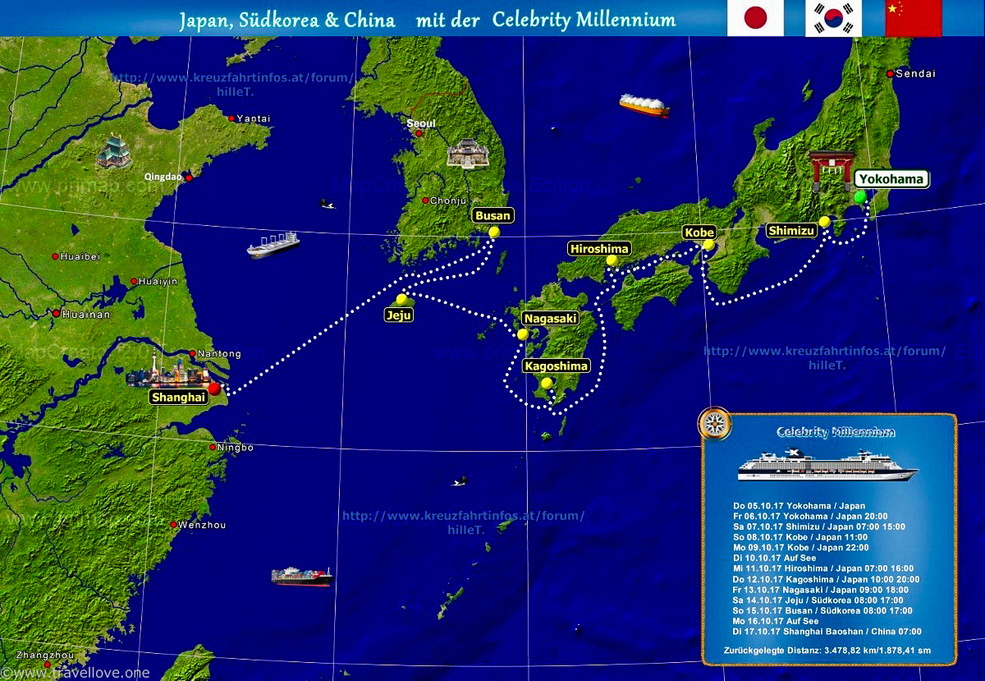
As so often during the last minutes before our flights in the boarding area at Frankfurt airport, the stress of the previous months had vanished and made room for this unmistakable feeling: „The time has come, we are off again!”
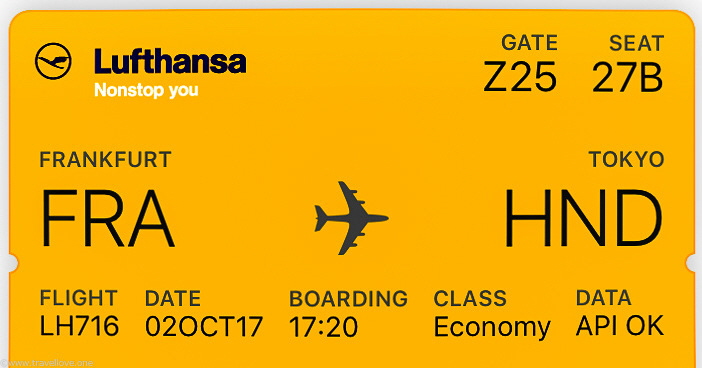
Our plane, a Lufthansa Boeing 747-8, was waiting outside the large windows of the boarding area. Plane spotters would have enjoyed the sight, as it was the only machine which had been painted in the same design as the original Jumbo in honor of the Jumbo Jet’s 60th anniversary.
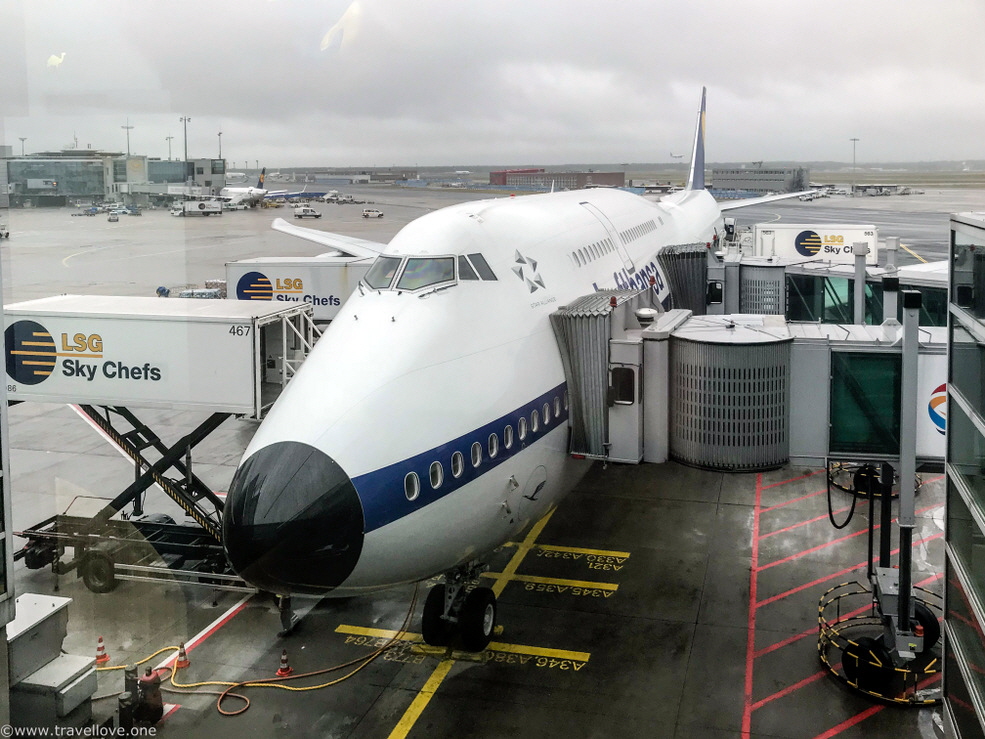
Inside, however, it had little in common with the Jumbo of the time. Modern seats, extensive in-seat entertainment and sufficient legroom thanks to the seats at the emergency exit made the 11 ½ hour flight bearable and entertaining.
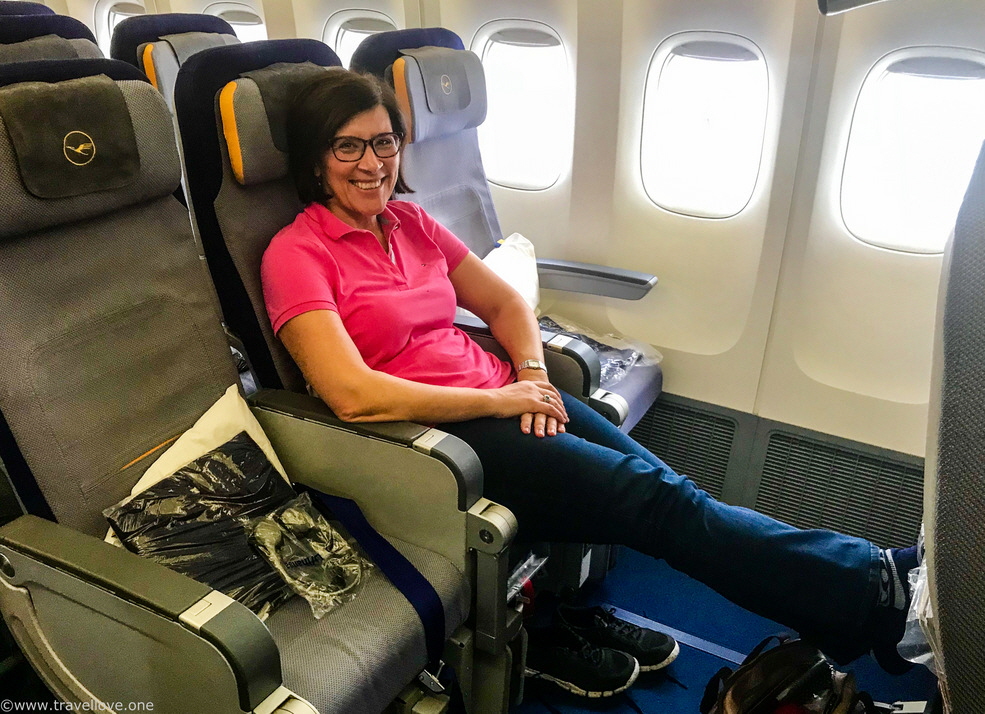
When we arrived in Tokyo the next day, we stopped at the restrooms before going through passport control. A few minutes later, Birgit returned with a mischievous smile on her face and showed me a photo on her iphone – her first encounter with a Japanese high-tech toilet. But more about this later.
After a short wait at the baggage claim, we retrieved our suitcases and followed the signs to Tokyo Monorail. Next to its ticket machines we also found an ATM, where I stocked up with Japanese Yen. With these we bought tickets from the machine, where a friendly lady in staff uniform assisted us. And just a few moments later we were already on the monorail heading for Hamamatsucho Station, where we changed for the JR Yamanote Line. The Yamanote Line runs in a circle across Tokyo, and our destination, Tokyo Station, was only a few stops away.
Our hotel, the Metropolitan Tokyo Marunouchi hotel, was right next to Tokyo Station. We had picked it because of its excellent reviews, but also because of its irresistible location right next to the station. This location already paid off.
I was glad that back home I had already watched a video with directions on the hotel’s website, which now made it easier for us to navigate through the vast underground maze of the station. Endless corridors with shops, restaurants, access to other subways and to the famous Shinkansen Bullet Trains were branching off in all directions.
Thanks to the video I knew that we just needed to find and follow Kitchen Street.
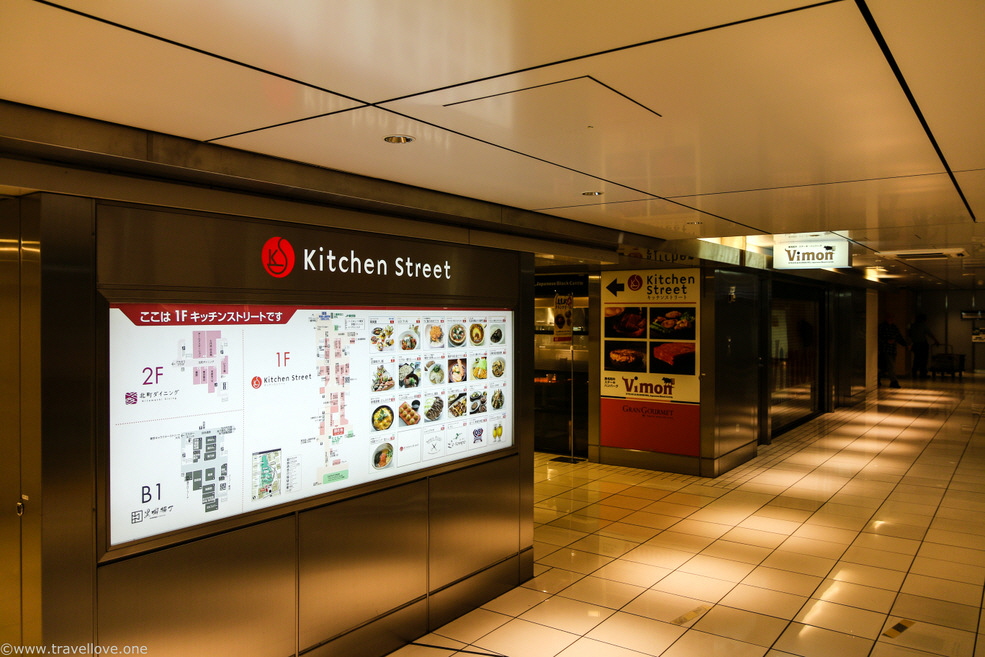
Kitchen Street leads directly to the exit at Nihombashi Gate. Right opposite this exit, the station flanks the Sapia Tower, in which our hotel was located. A private elevator took us to the 27th floor of the building, where we found ourselves in the large, open-top lobby of the hotel.
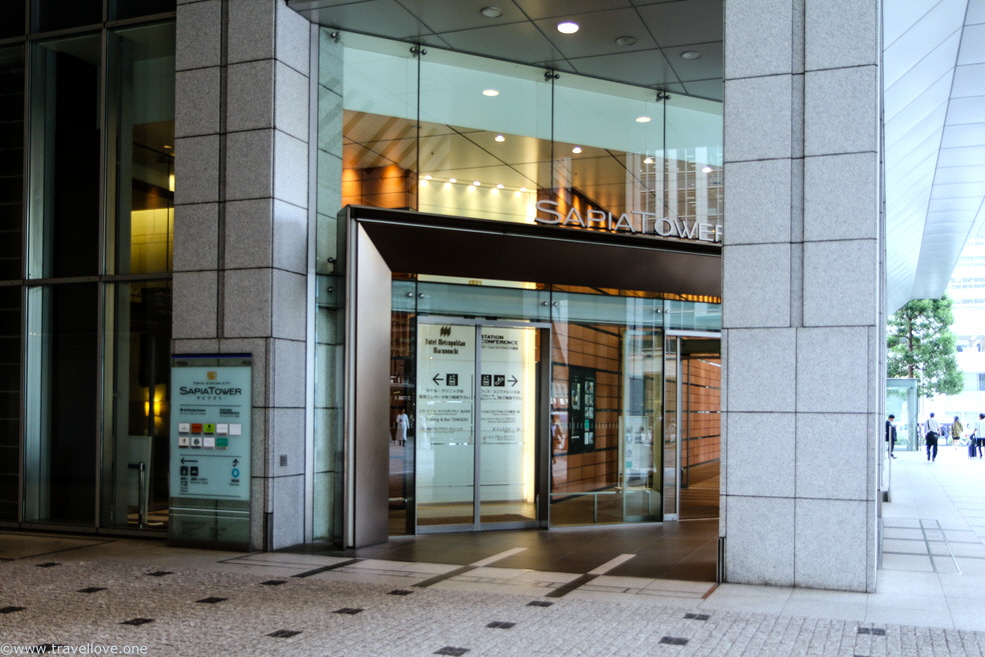
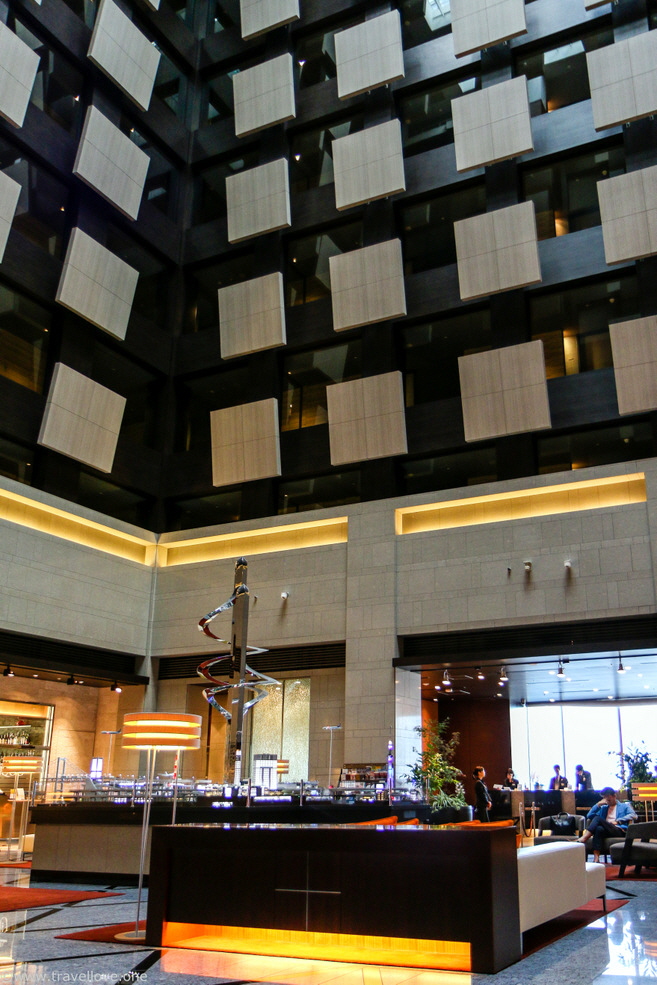
The lobby was bright, inviting and dominated by a work of art in its center, in which a model railroad meandered through a stylized Tokyo with its striking landmarks.
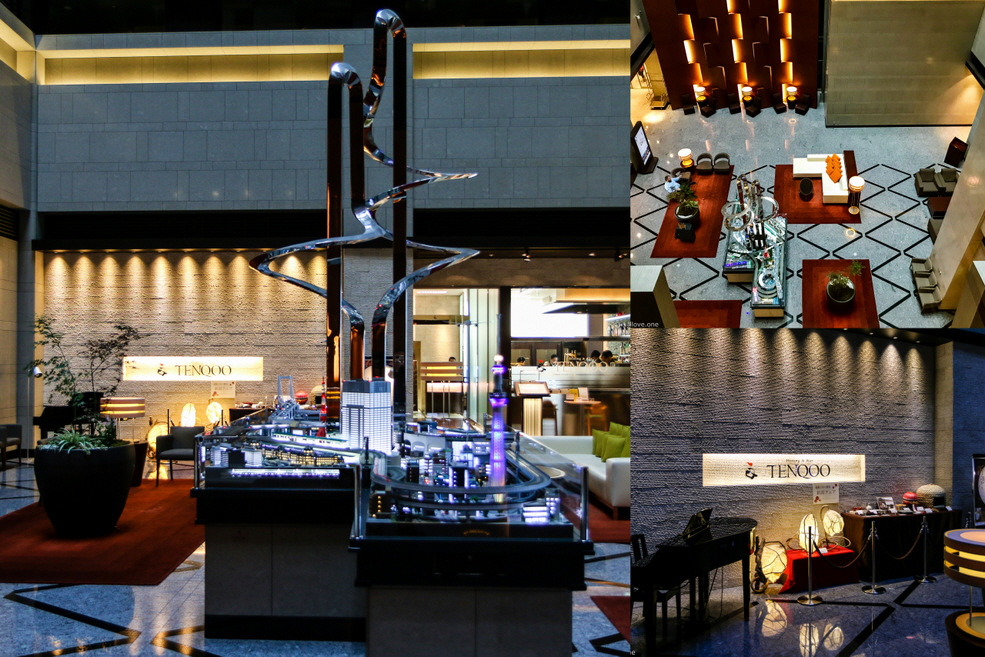 More about the hotel HERE
More about the hotel HERE
After a swift check-in, we used our room cards to enter a separate area, from where we could access the elevators to the room floors. With its discrete lighting and the warm colors, we also found this area very inviting.
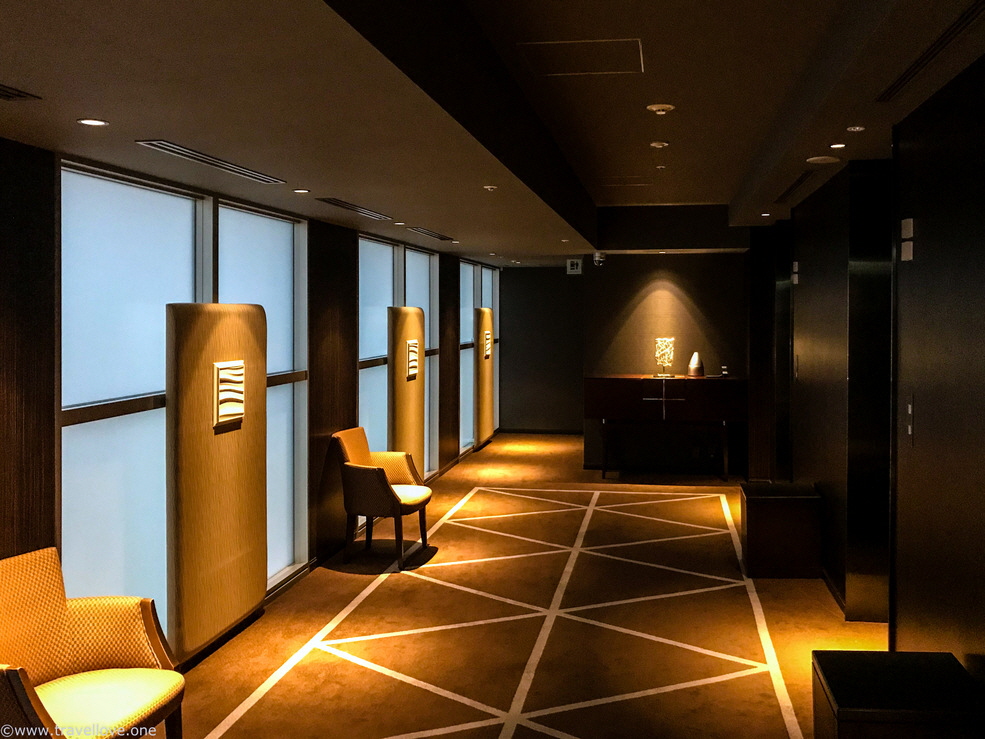
We had booked a room with a vew, high up in the tower above the station. The room was functional and modern, and the large windows in the room and the bathroom allowed for a beautiful view of the highrises of Ginza and Marunouchi.
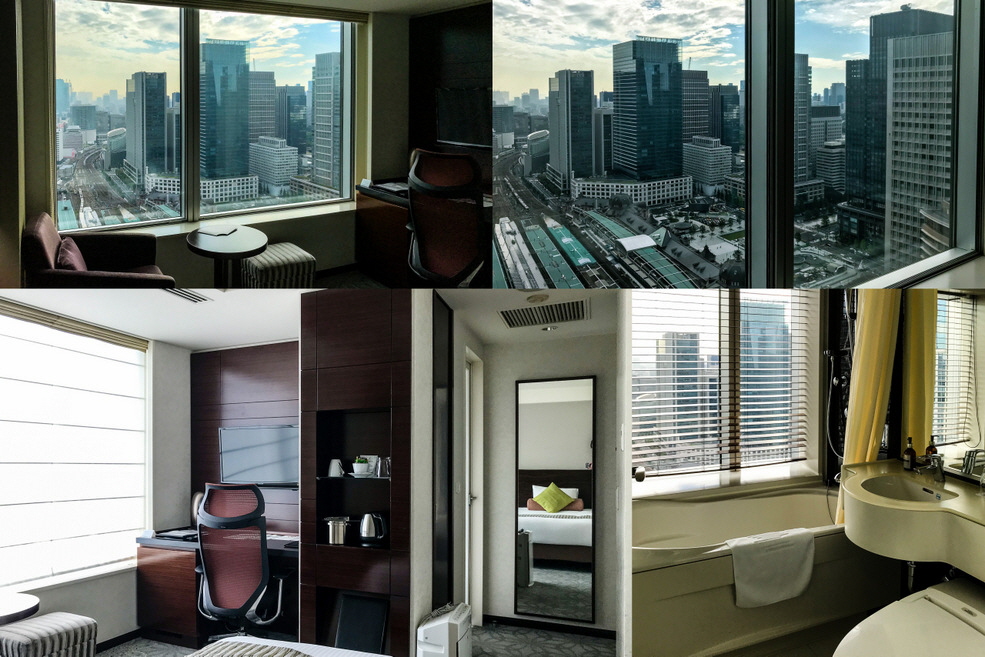
The bathroom greeted us not only with an equally stunning view but also with one of the Japanese high-tech toilets, before the use of which it would seem wise to study a manual. Water jets from different directions, obviously adjustable in intensity, as well as a drying fan made the heated seat look commonplace in comparison and almost made the visit an adventure...
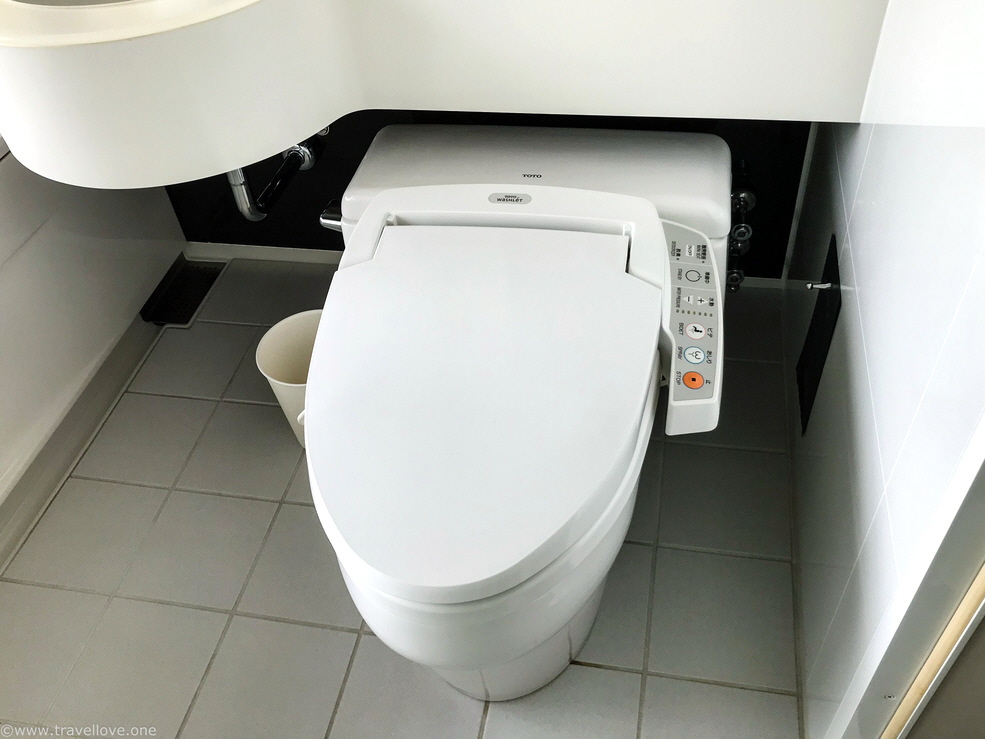
We could barely resist the call of the cosy bed and decided to rest for a while. Not without setting the alarm clock, though, because we were eager to explore at least a small part of Tokyo.
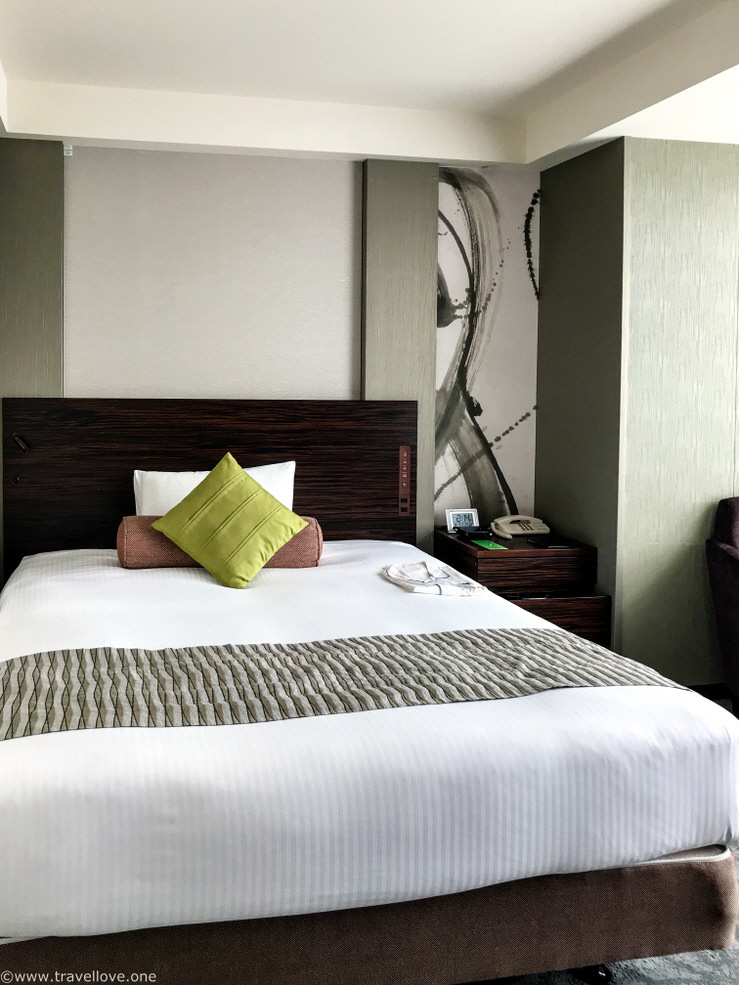
After a short nap, the urge to discover the city took over. So we returned to the underground maze of the station and followed the corridors until we reached the large, nostalgic hall of the main entrance on the west side.
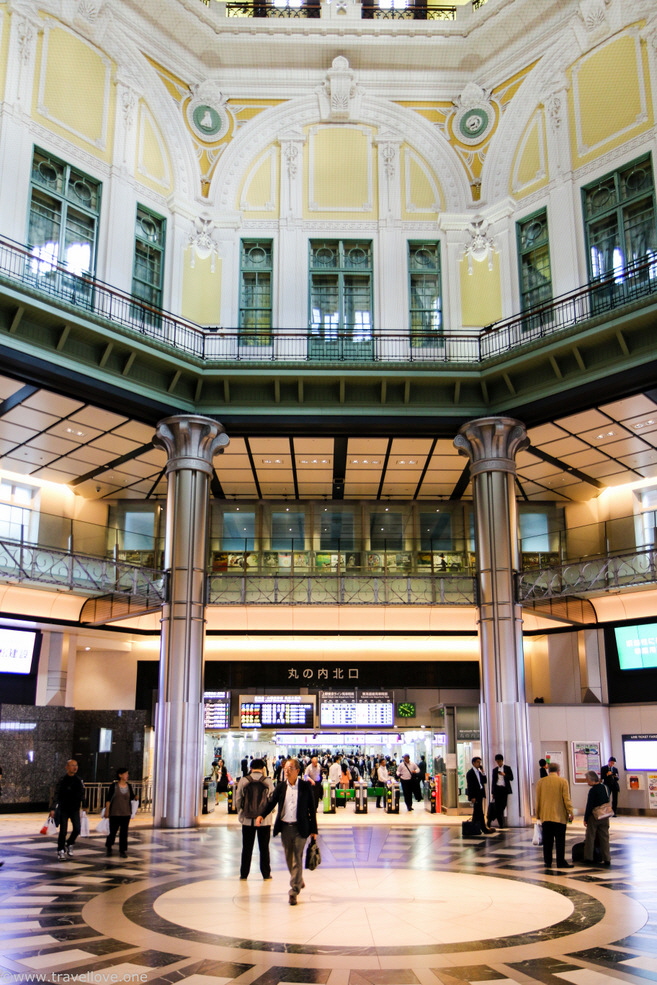
Actually, the station building was modeled on Amsterdam Central Station in 1914. After the cultural opening of Japan and the end of the policy of isolation, the country’s urge to appear “western” must have been so strong that an alternative design by German railway engineer Franz Baltzer, who worked in Japan at the time, was rejected as “too Japanese”.
The magnificient building was largely destroyed during the Second World War, and the costly restoration to its original state was only completed in 2012. Today, the brick front greeted us in shining splendor and formed a striking contrast to the glas walls of the highrises behind.
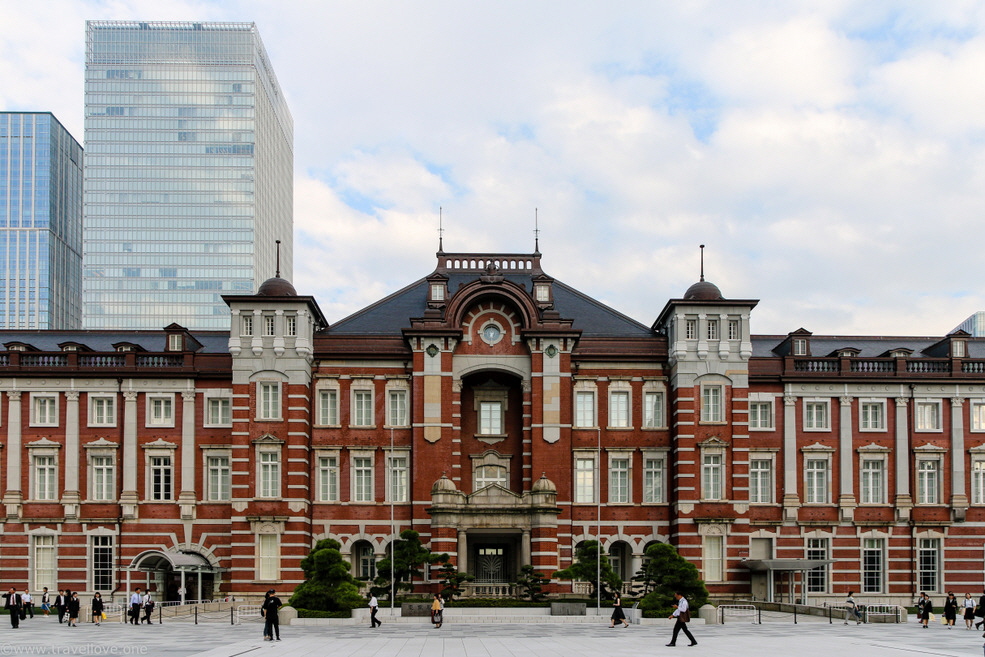
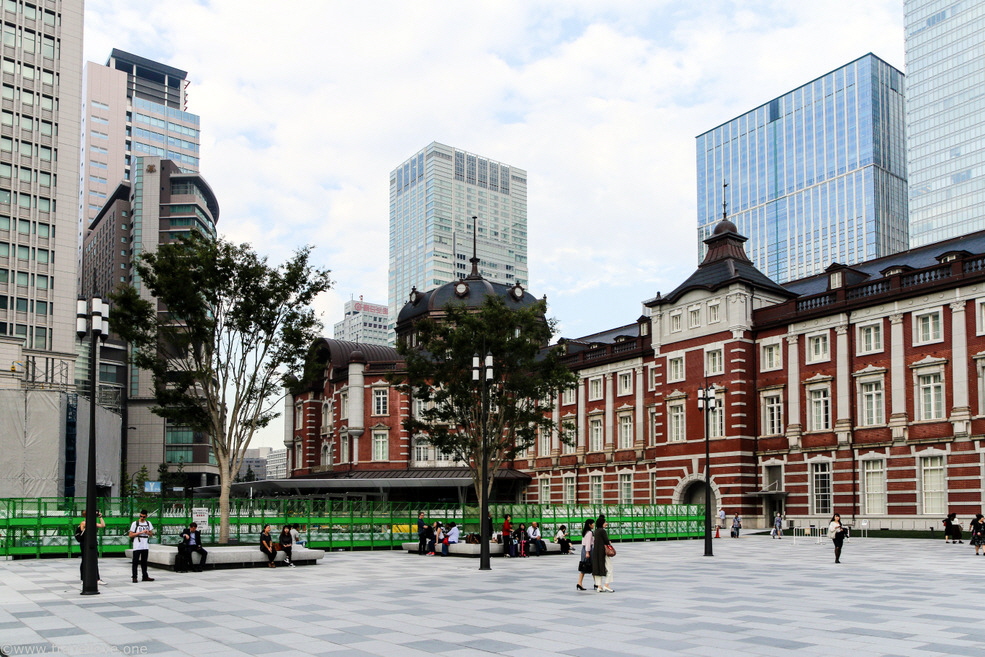
This contrast also seemed to appeal to the Japanese youth, as many were taking selfies against the backdrop of the station. On the other hand, this might have simply been due to the irresistible temptation to do this anywhere anytime.
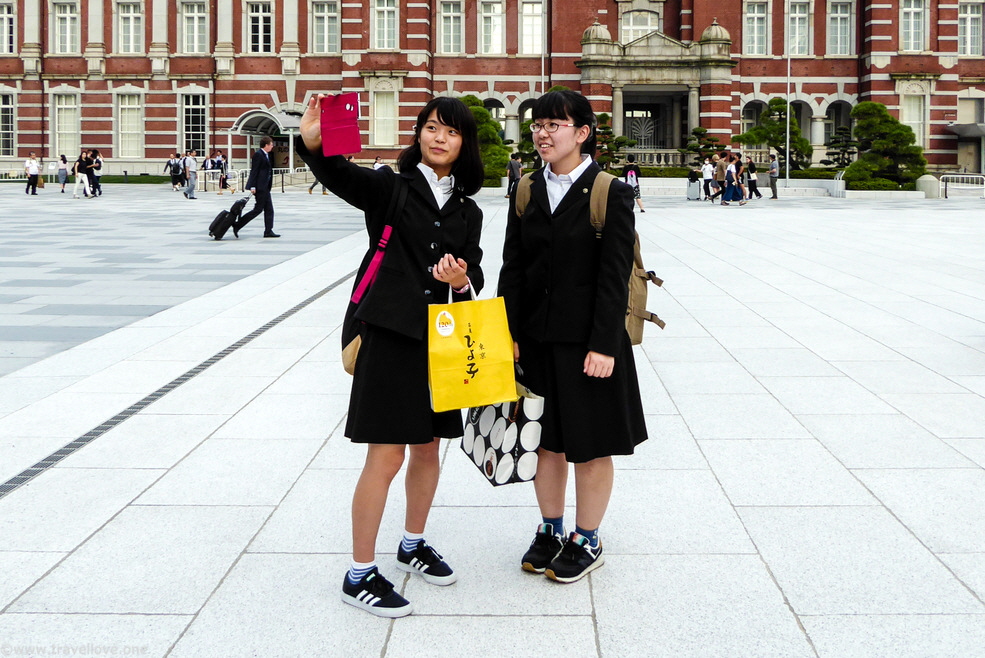
At a right angle to the main entrance, a wide pedestrian street led away from the station and opened into an avenue leading across the moats around the Imperial Palace towards the eastern park of the palace. Here, the wide moat seemed like a border between the modern, bustling business district of Marunouchi and the quiet parks of the Kokyogaien National Park.
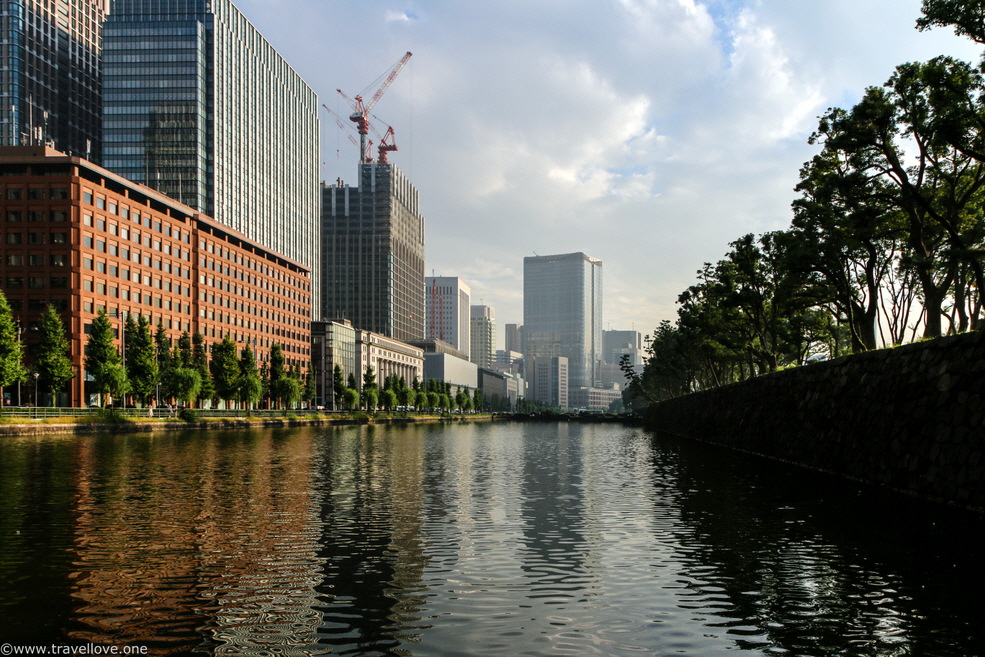
The expanse of the park was perfectly maintained and the magnificient trees looked just as manicured as the green lawn shining intensely in the light of the afternoon sun. Despite the view of the nearby Marunouchi skyline, the entire complex radiated a certain calm and peacefulness.
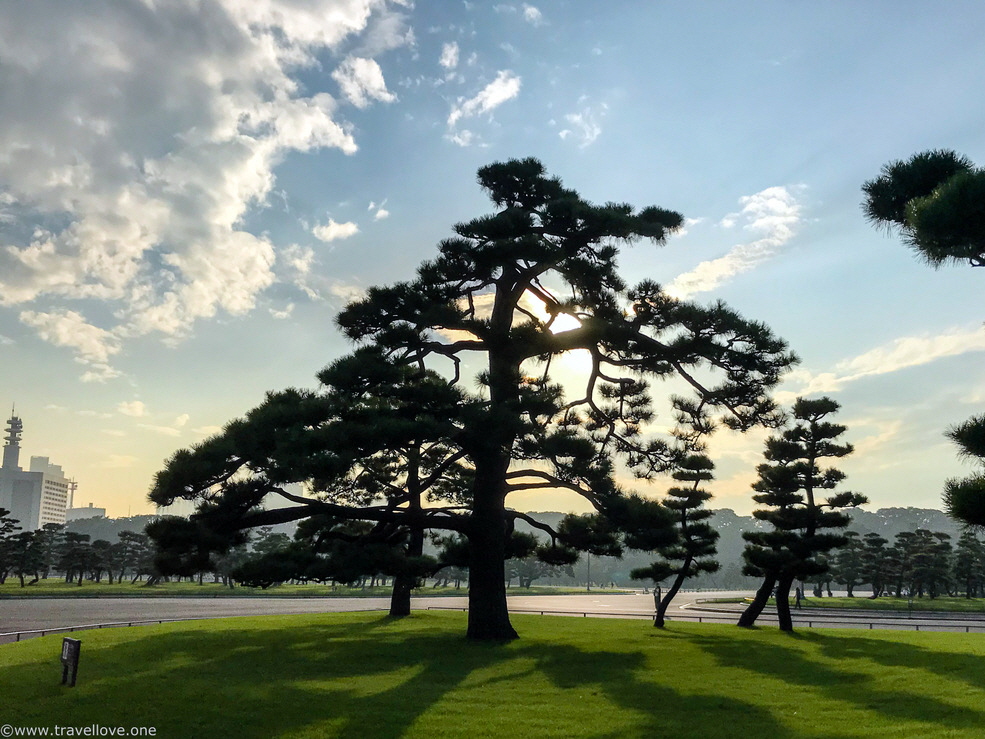
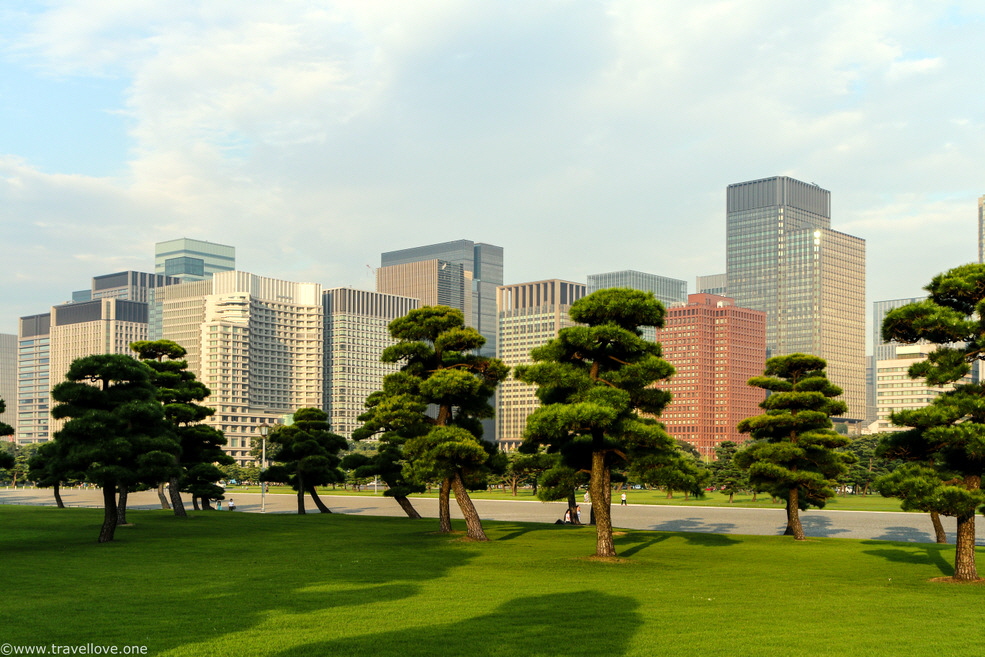
The entire area of the park and the Imperial Palace covers the original footprint of Edo Castle, which was originally built in 1457. It then fell apart again and was only later reconstructed, around 1590, by Tokugawa Ieyasu, a powerful Shogun. Ieyasu not only expanded the castle but also turned the insignifcant fishing village of Edo into a castle town and seat of government. In doing so, he laid the foundation of what would later become Tokyo. After the shogunate was dissolved in 1868, the new government renamed the city Tokyo and relocated the seat of the then 16-year-old Tenno to Tokyo in 1869.
Parts of the walls and some buildings of Edo Castle are still preserved. In the soft light of the afternoon, their reflections in the water of the moat were quite striking and scenic.
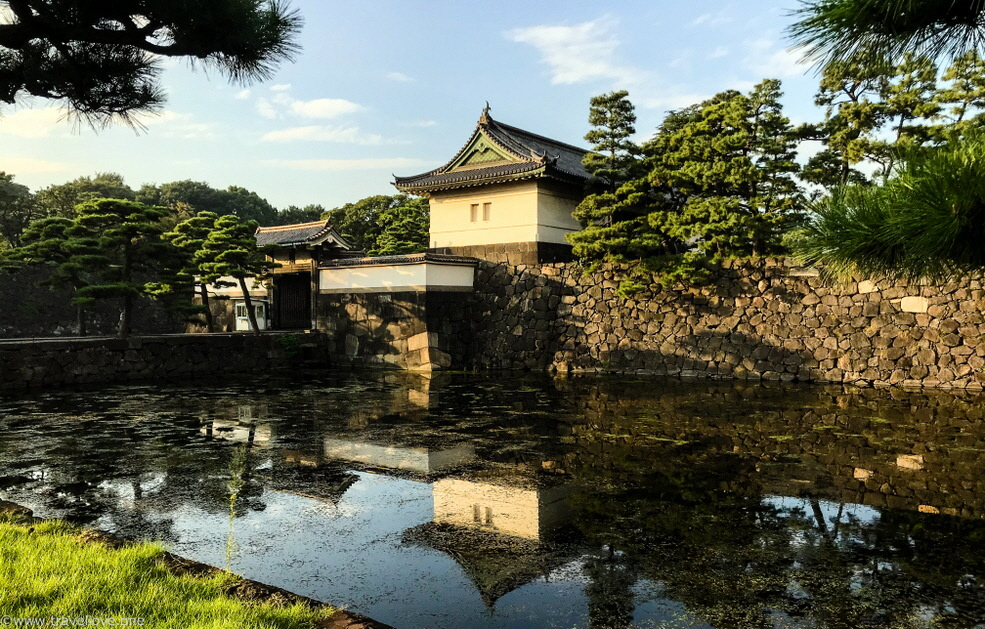
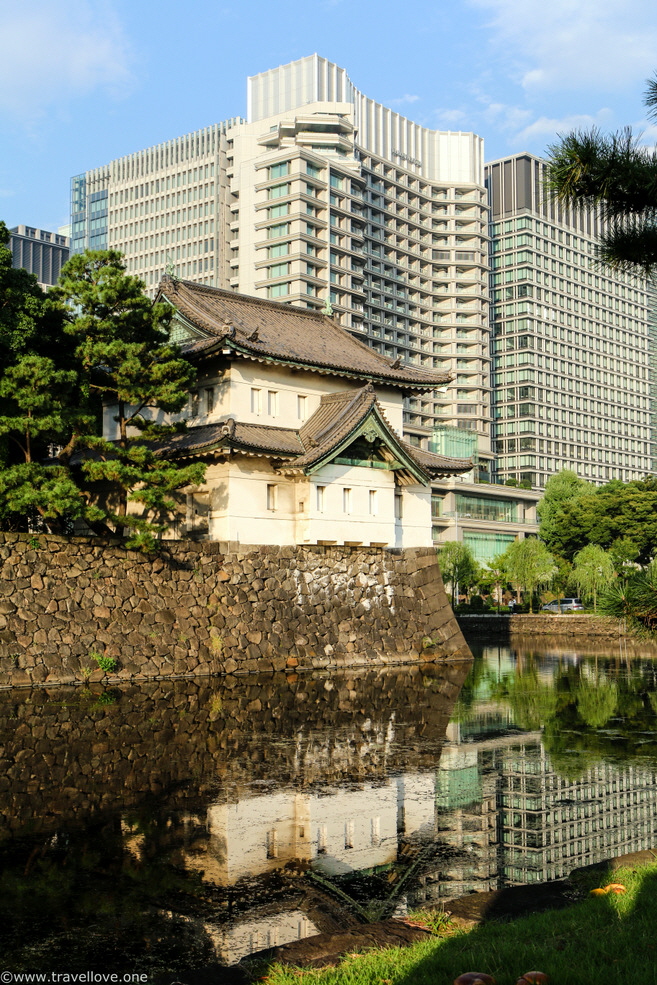
We walked along the walls and reached “Nijūbashi” (double bridge) – one of two bridges leading to the interior of the palace grounds. It can be found on many postcards and in guidebooks, but this is only its popular name. The acutal name of the stone bridge is Seimon Ishibashi, and the name of the iron bridge behind it is Seimon Tetsubashi.
The sun, meanwhile low in the sky, gave an almost dramatic air to the bridges and the palace building visible behind.
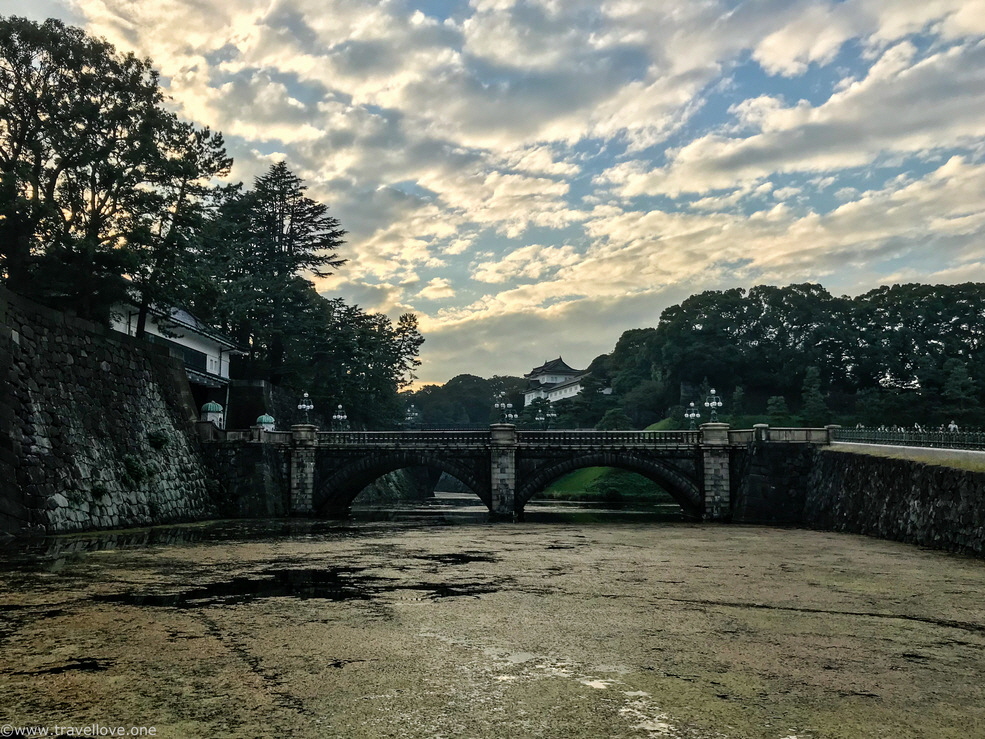
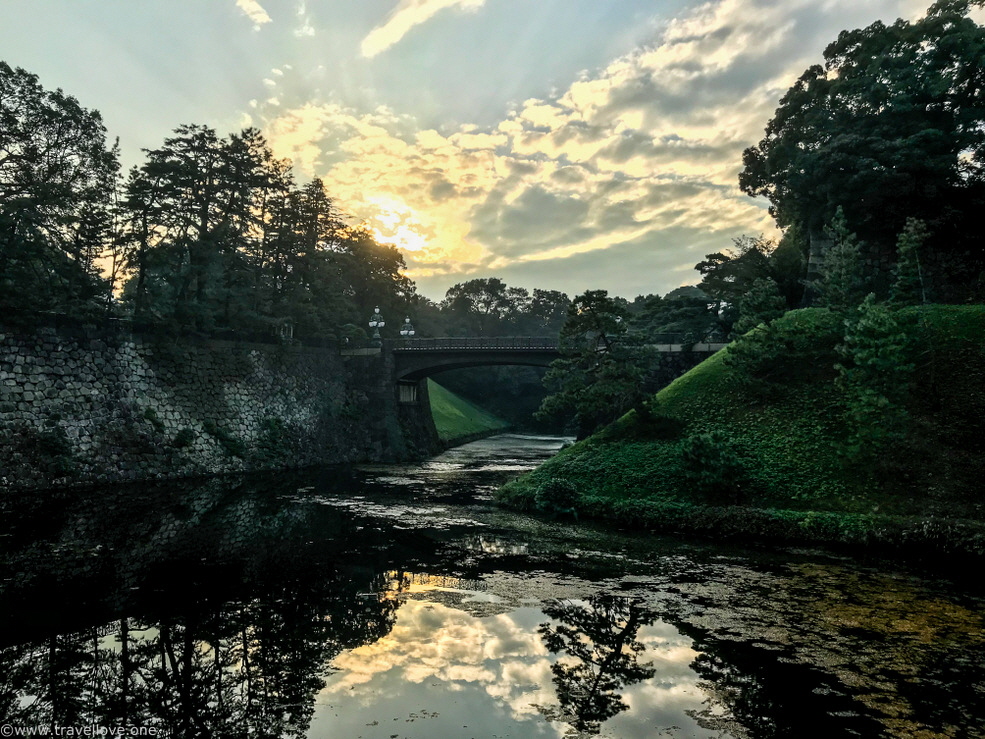
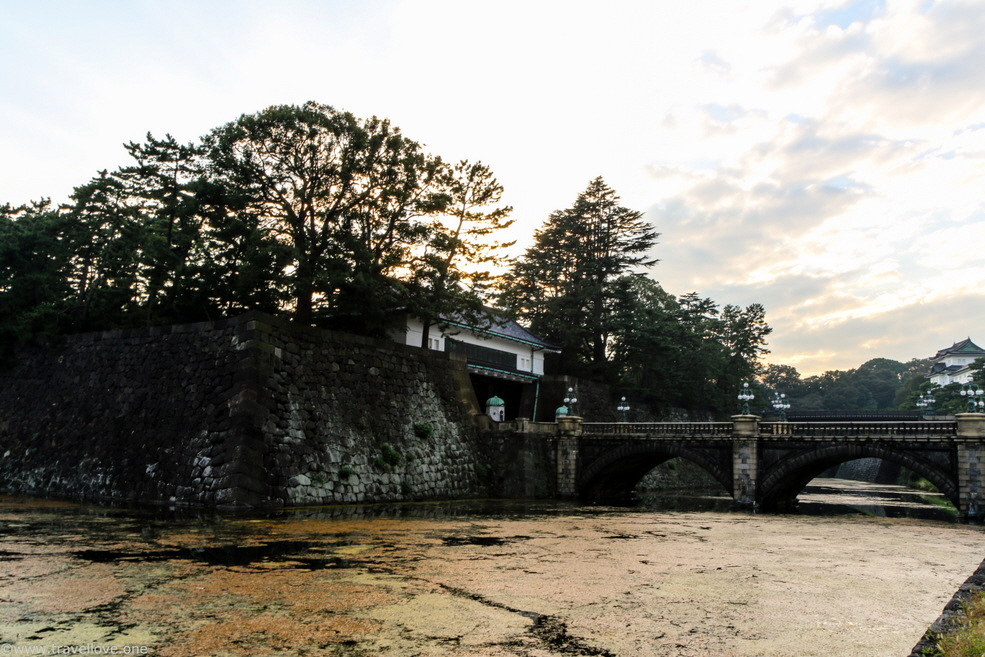
The stone bridge leads through a gate called Nishinomaru Ote-mon, the main gate of today’s imperial palace. Obviously, access to the palace through this gate was denied to us. Attentive policemen were seeing to it.
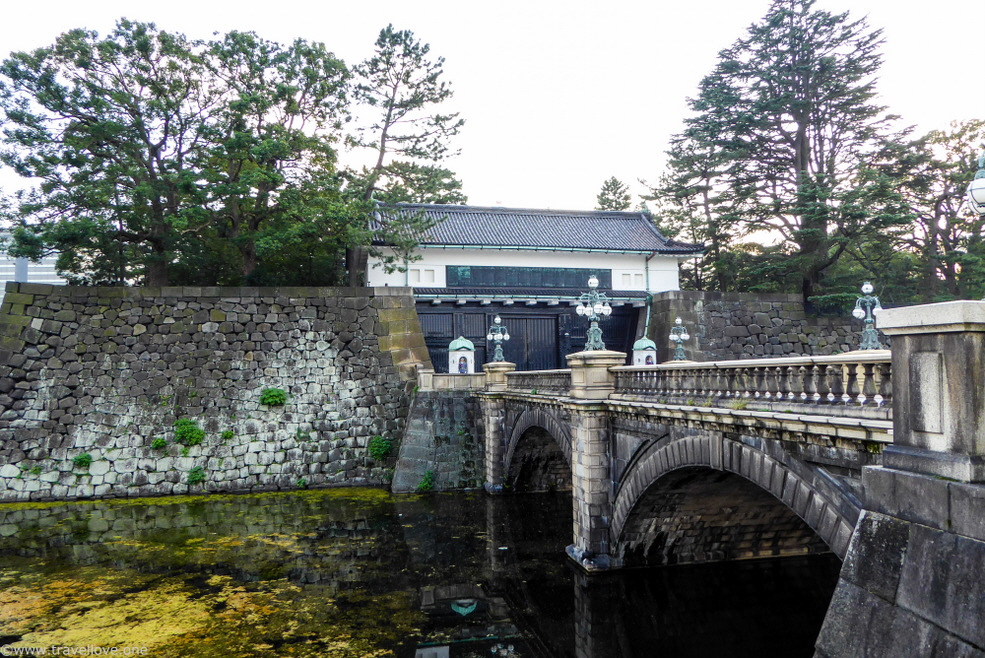
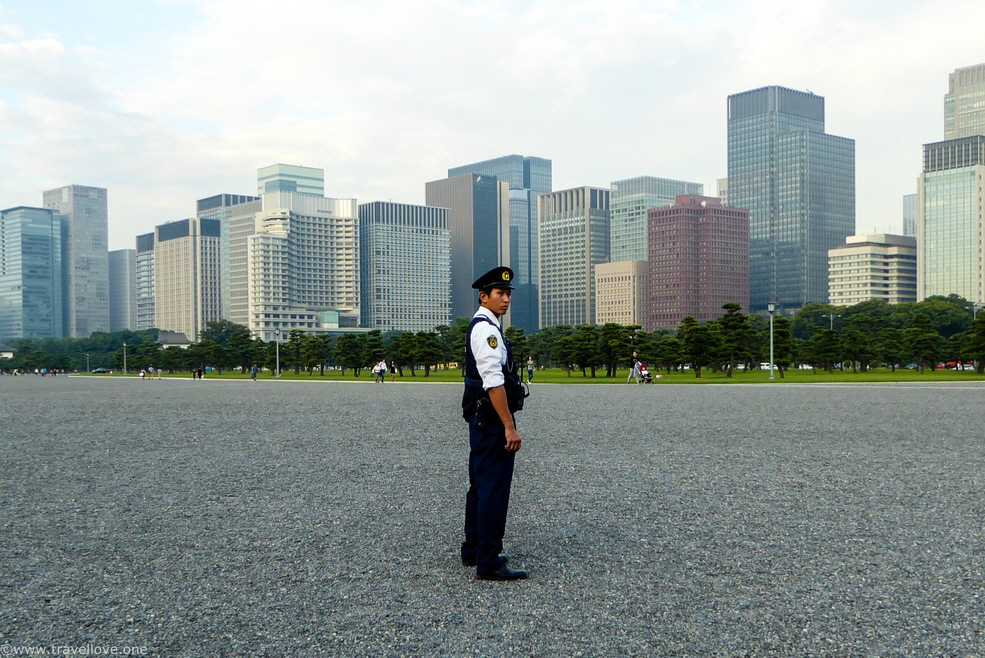
Instead, we passed through another gate, the Sakuradamon gate. Also one of the original gates of Edo Castle.
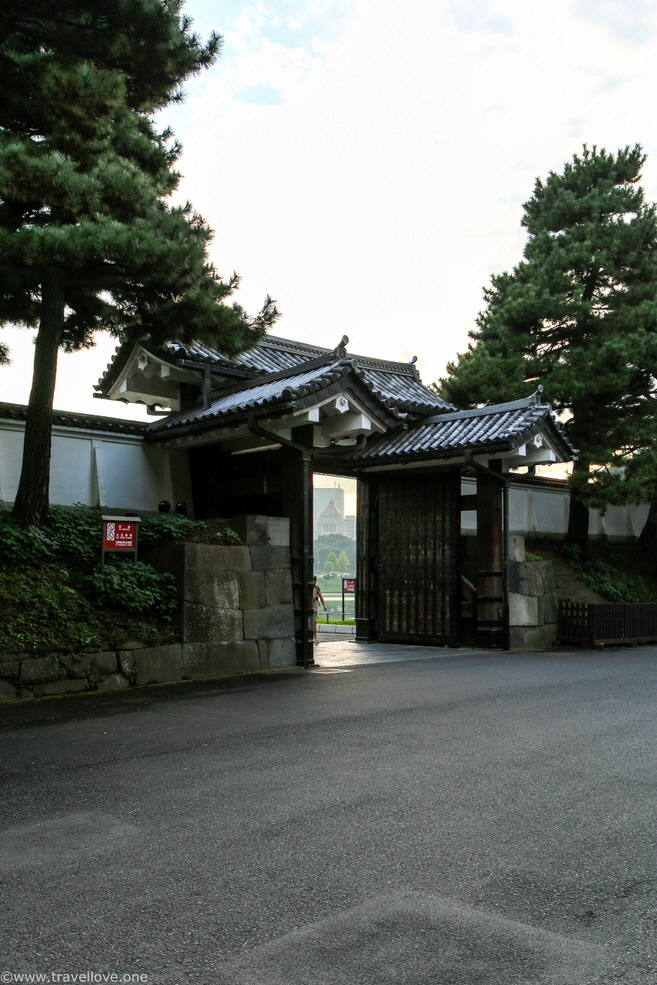
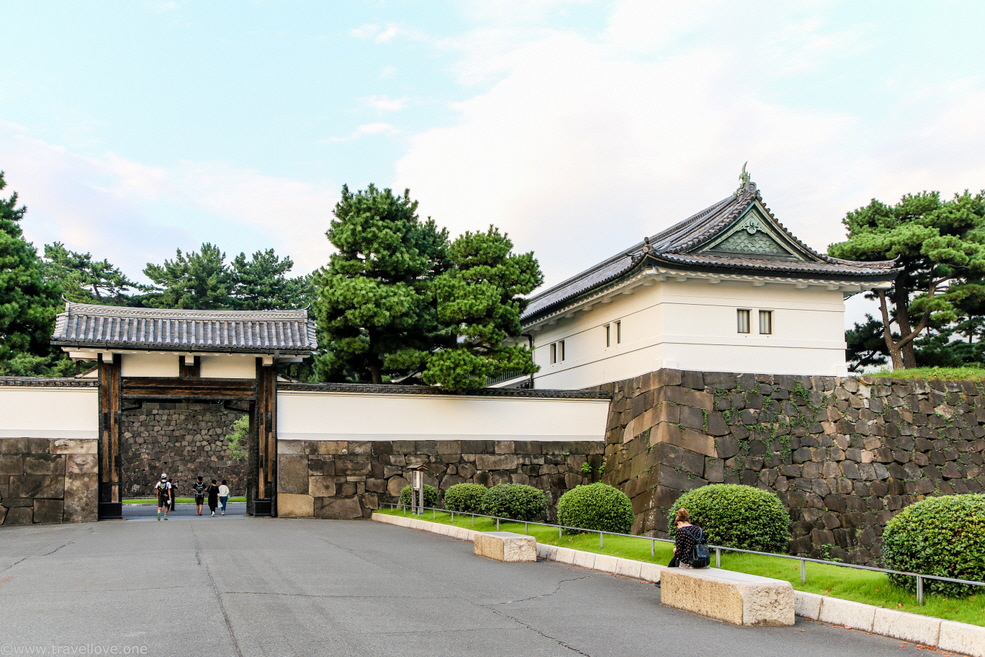
This gate is also known for the „Sakuradamon incident“ (1860), when Ii Naosuke, a ruler of the Tokugawa shogunate, was assassinated by 17 samurai (Ronin). Besides domestic political reasons, the main motive was that Ii was a vigorous advocate of Japan’s opening and was forging trade relations with other countires, which the samurai considered a betrayal.
Behind the gate we entered the subway and took a train to the area of Shibuya to see the famous Shibuya crossing. At every subway station there are ticket machines with big network maps above. The names of the stations are written in Japanese characters as well as – for us – legible Western characters. On the map you look for your destination. Each name has a number next to it, e. g. 410, indicating the fare. At the machine you simply push the button for 410 yen and the symbol for the number of tickets.
Often, some of the subway exits ended up in the middle of buildings, as did the one we used in Shibuya. We found ourselves in the middle of a big department store and had to find the right way out. But this way we also got to see other things. The journey is its own reward...
When we finally found our way out, we entered a Tokyo so unlike the quiet palace gardens. Modern buildings made of glass and steel and facades covered entirely in LED screens with sound advertisements – impressions almost as you know them from science fiction movies.
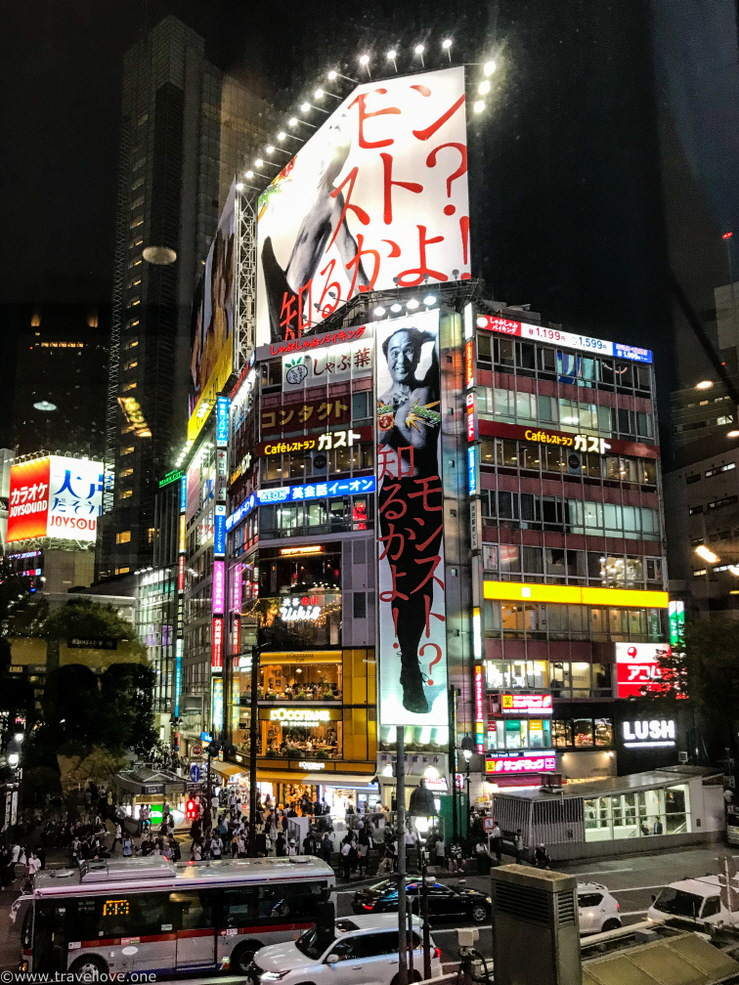
In the end, the crossing wasn’t hard to find. We only had to follow the flow of pedestrians. You might be wondering what’s so special about this crossing. That’s quite easy: The Shibuya crossing has several passages that run along the side streets and diagonally across the streets. At peak times, up to 15,000 people simultaneously use the zebra crossing during one single phase of traffic lights. It’s unbelievable.
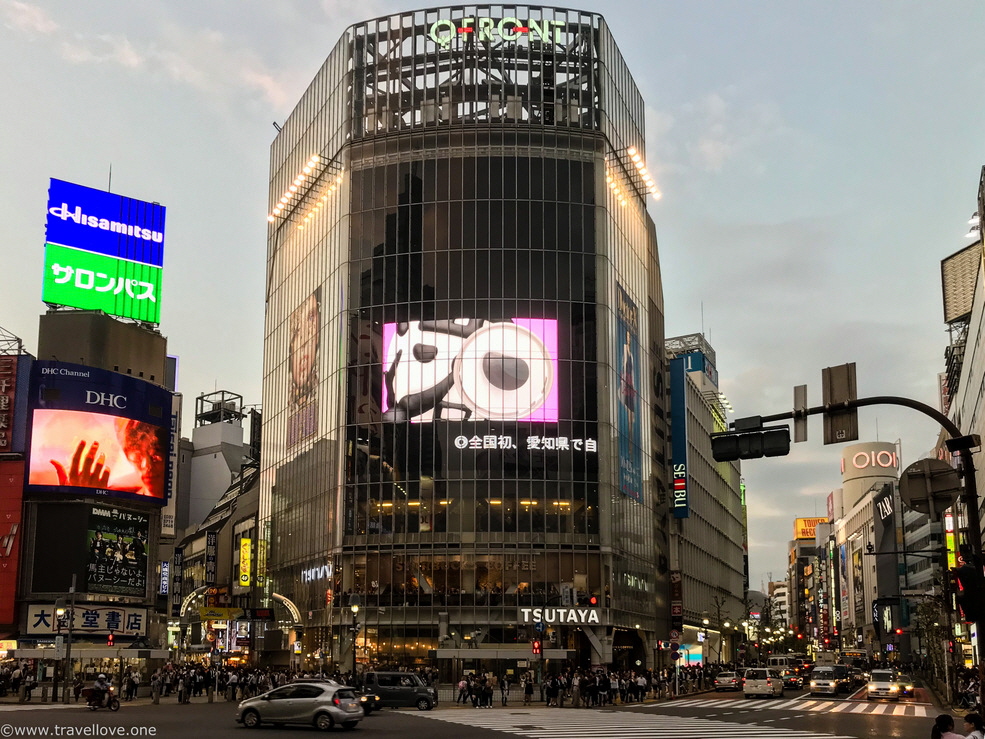
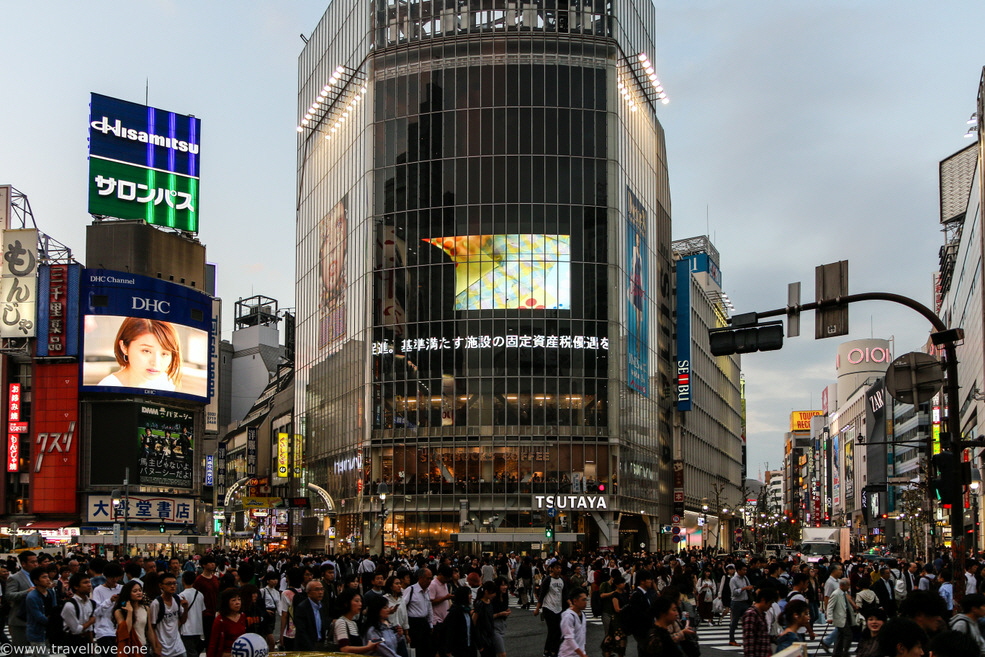
And the crazy thing is that the whole thing is actually quite structured and organized. For almost exactly one minute, it’s bustling everywhere and the crowds seem to be criss-crossing, then the pedestrian stream dies almost immediately and the cars take over again. And on this day it was apperently rather quiet.
Of course, we also wanted to cross the street here at least once:
On the other side we went to a Starbucks, where we got the box view of the „one minute madness“.
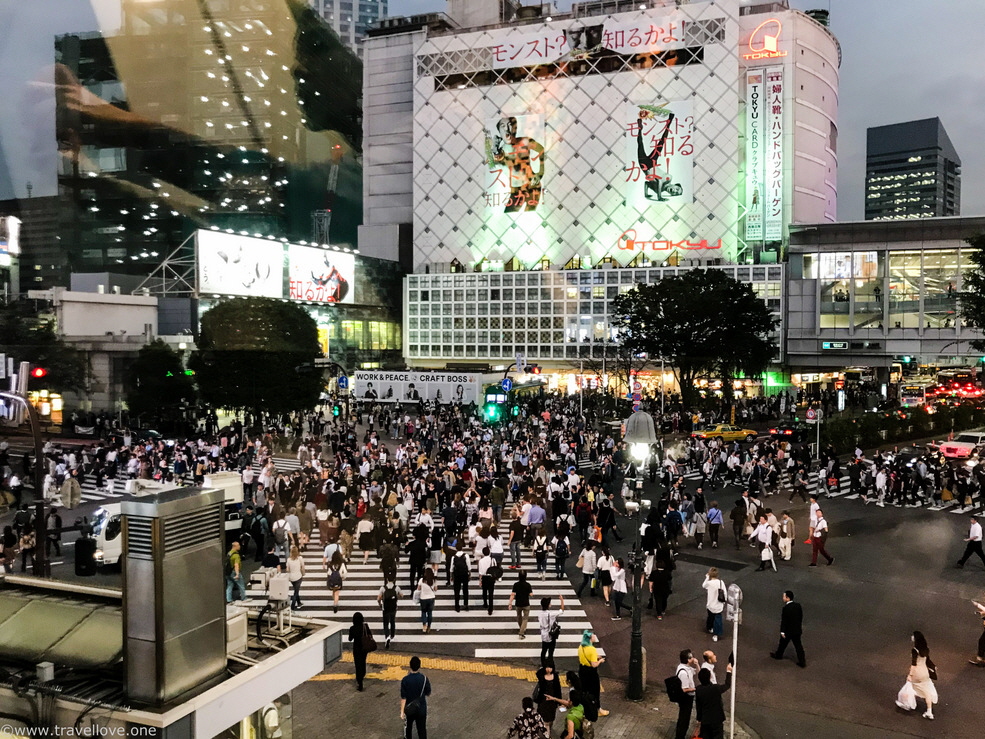
By now we started to feel hungry and wanted to look for a restaurant. But our habits played a trick on us. Back home, when we see a neon sign with Asian characters, it is usually an Asian restaurant. But what do you do when all the signs on the shops look like this and could ultimately mean anything from locksmith to car wash?
We quickly found the solution: At an underpass we noticed a group of young people holding up signs saying „How can I help you?“
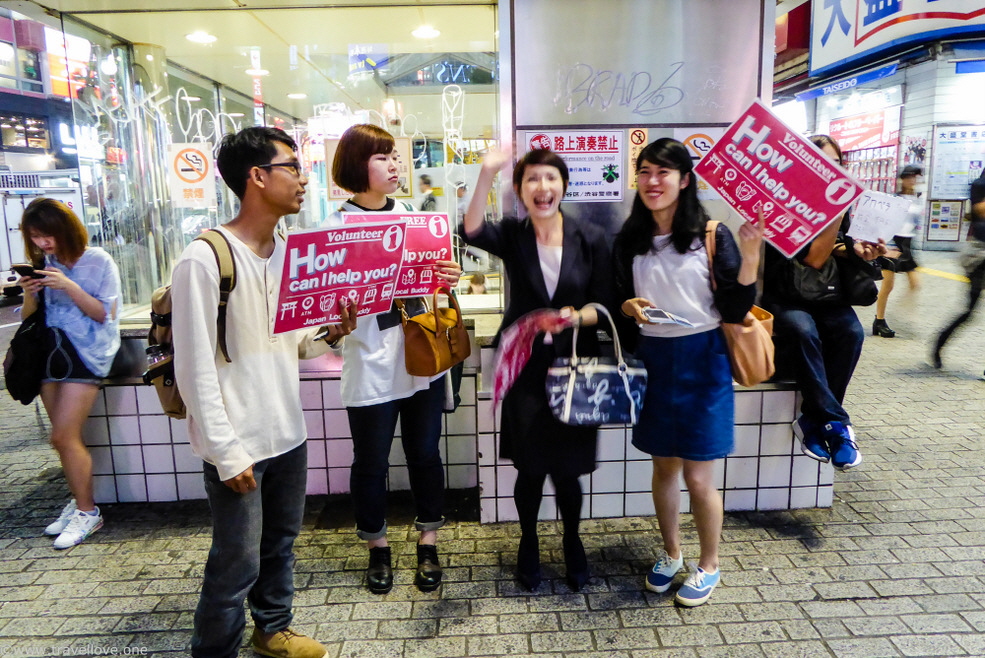
They were so-called „Japan Local Buddies“, i. e. young people wanting to improve their English by helping tourists and interacting with them. We thought that a local would surely be able to recommend a good restaurant. No sooner said than done ... after a funny conversation about our preferred tastes (their first suggestions of sushi wasn’t really a winner with me), we soon decided on Ramen, which was perfect.
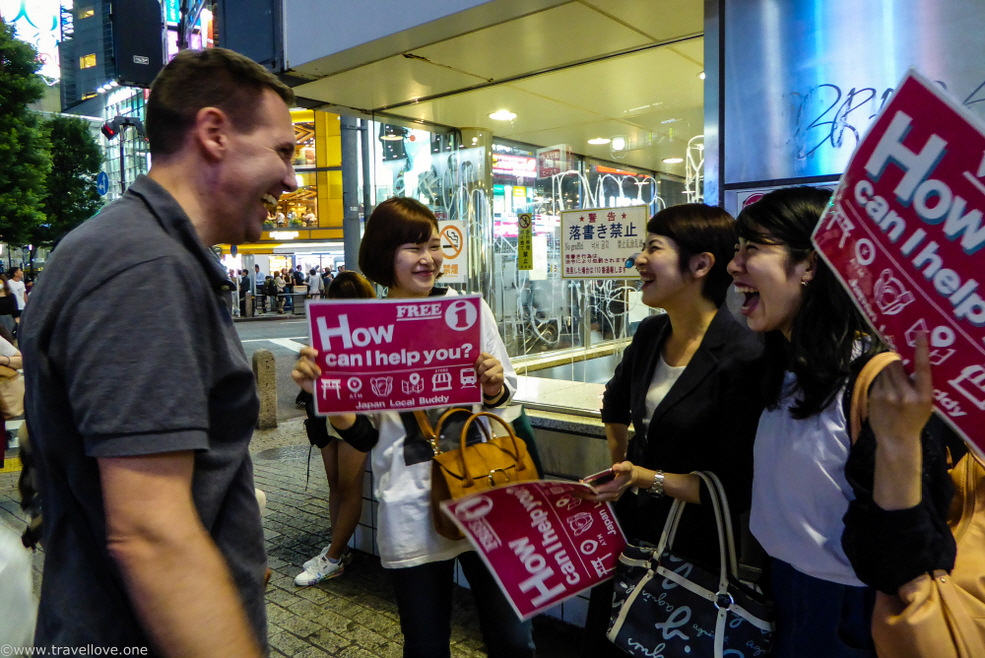
Two of the buddies asked us to follow them and led us into a colorfully illuminated side street.
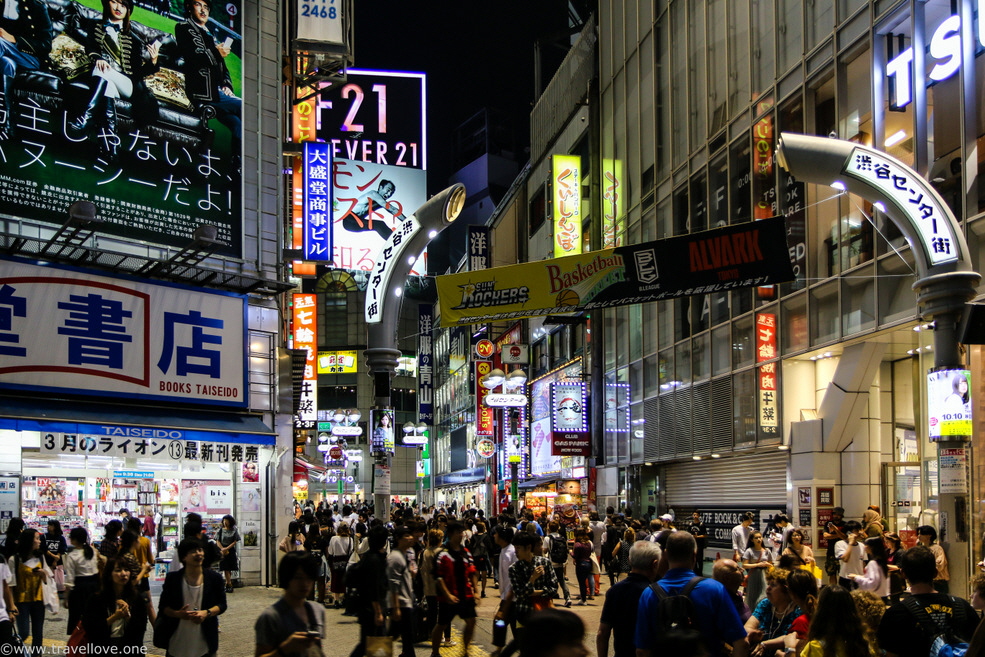
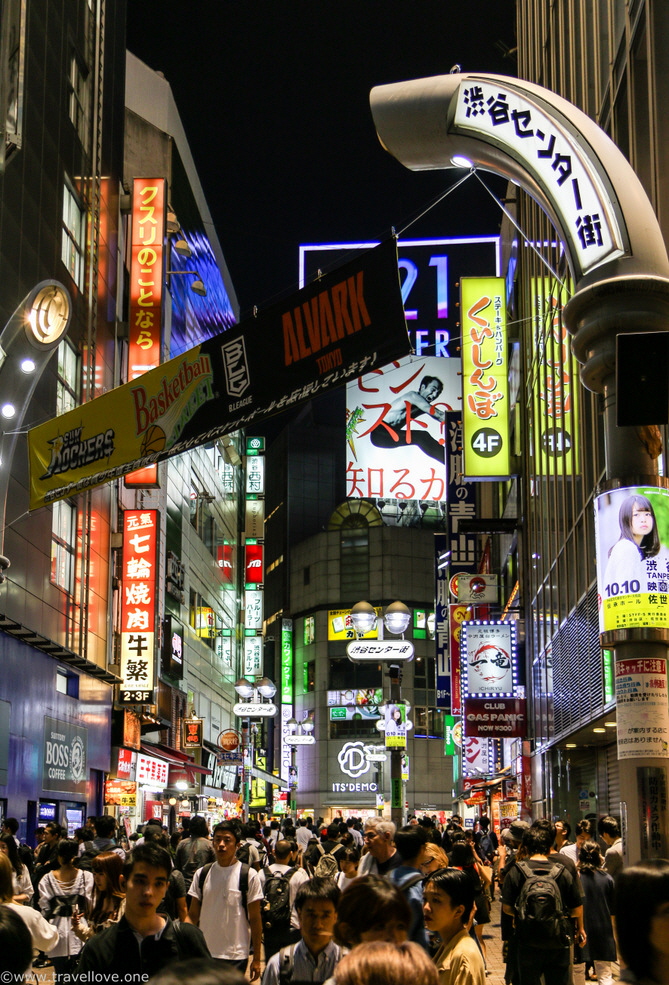
Obviously, there were many other restaurants to be found on that street. From street vendors to Irish Pubs and the golden M everything was represented. Fortunately, we passed all of those and stopped in front of what seemed like quite a popular ramen/noodle restaurant.
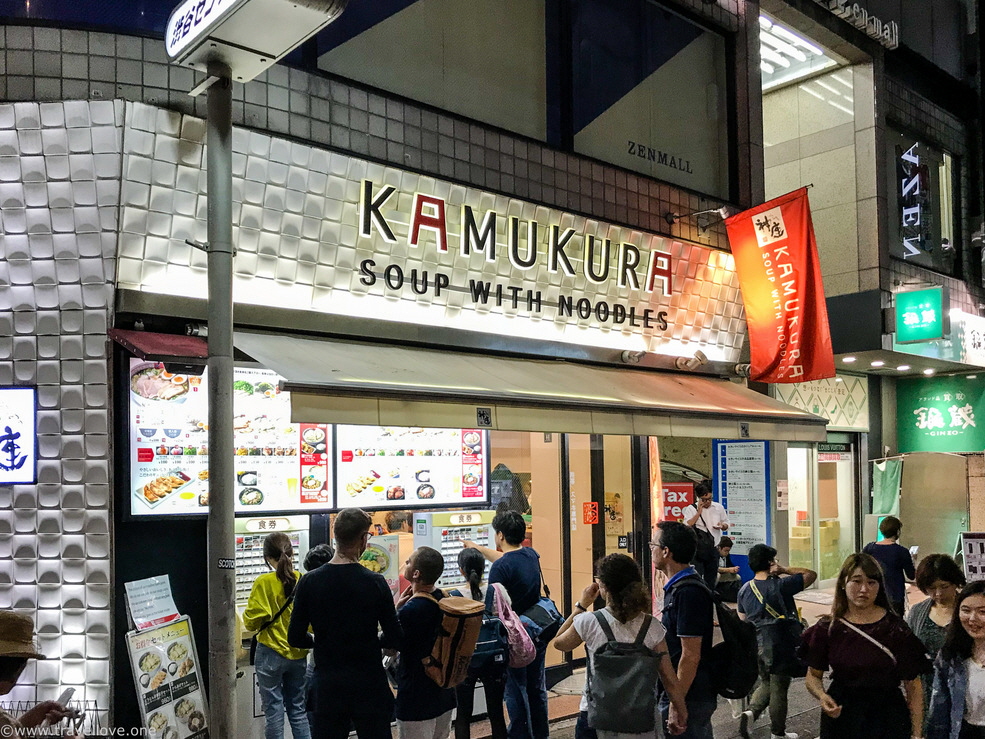
What was completely unusual for us was the restaurant’s shop front. It had 2 machines installed in the wall, which reminded us of subway ticket machines.
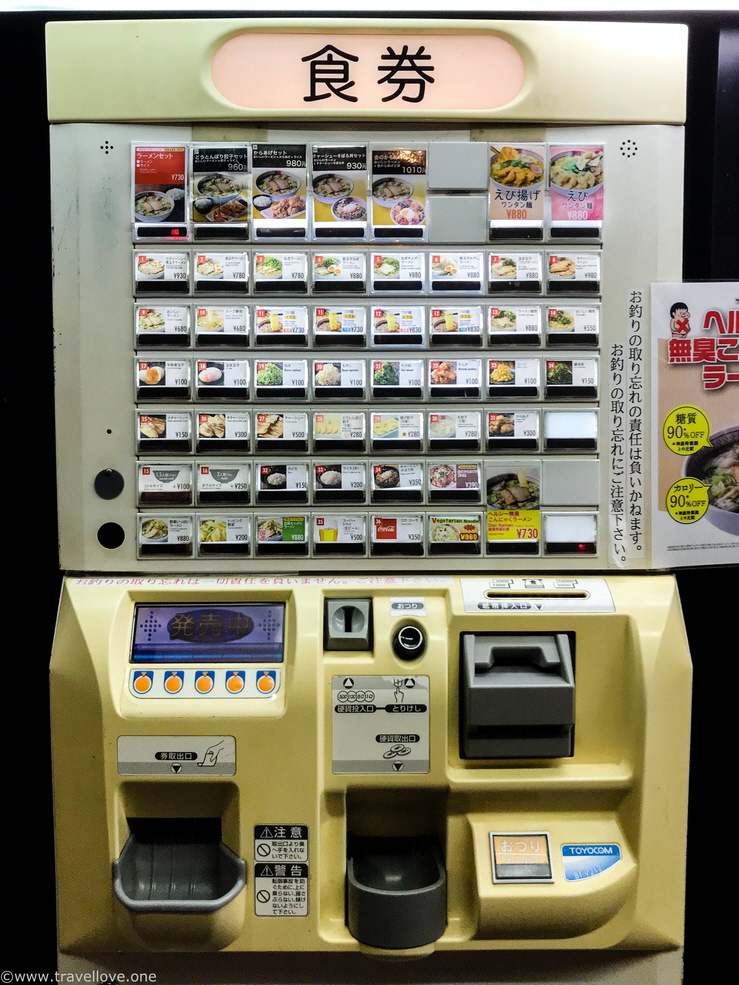
We gave our buddies a slightly puzzled look, who seemed to find these machines absolutely normal. Only when we asked them what to do did they realize that this kind of restaurant wasn’t quite the oridnary for us and explained in a friendly way, and almost a little amused by our ignorance, how to go about it. Then they wished us a good time in Japan and happily said goodbye.
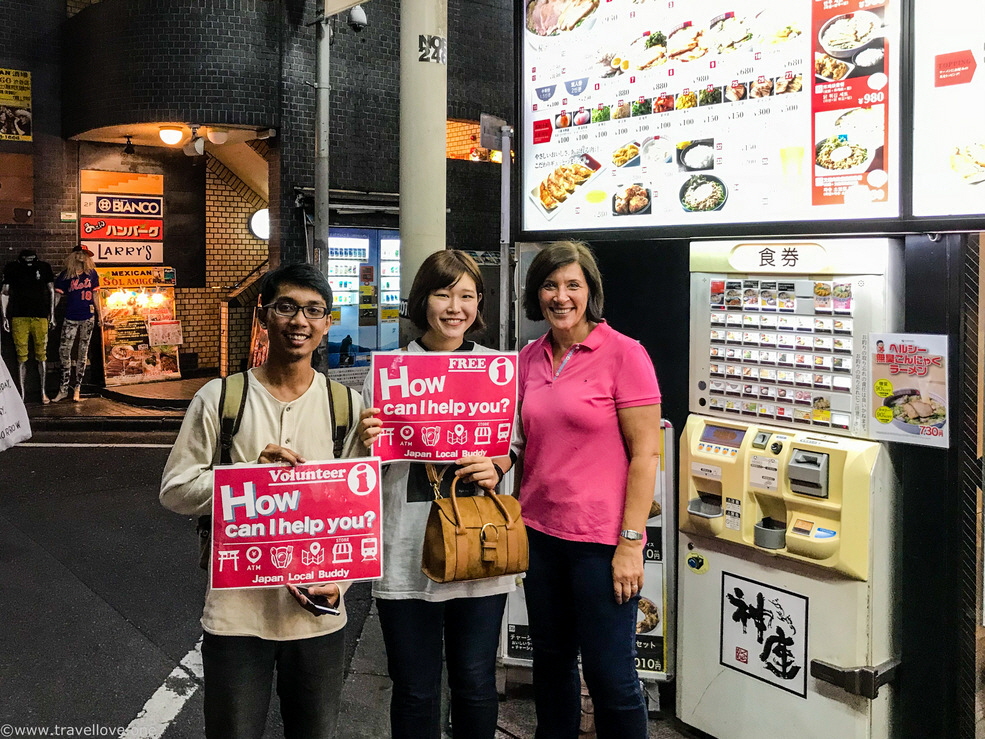
So now we started to choose our food and did as we were told. We fed the machine with some bills and chose our dishes by pushing the illustrated buttons.
The basic dish was either a bowl of broth with noodles or other ingredients or a bowl of rice with meat. All other buttons were for other ingredients like leek, onions, egg etc. or sides like potstickers etc.
Everything looked really good and the prices were decent – so we just went for it and pushed the buttons of our favorite choices.
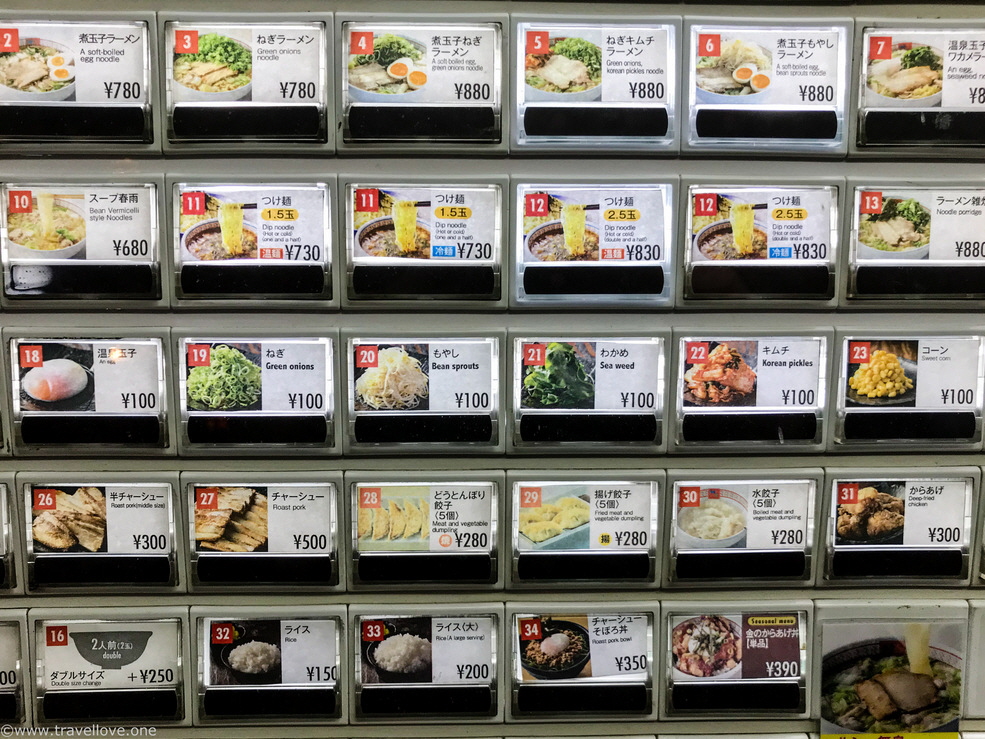
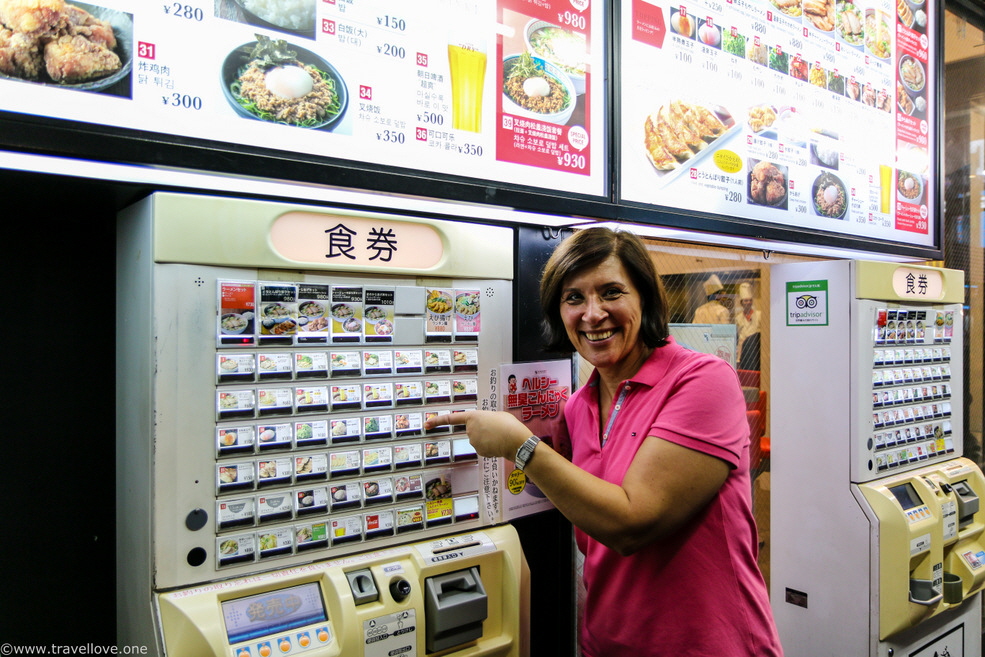
Besides its appearance, the machines had one more thing in common with a subway ticket machine – they actually spat out little tickets which reminded us of subway tickets. A little hesitantly we took our ticktes inside the restaurant, where we were instantly greeted by friendly chefs behind the bar, who directly assigned us two seats.
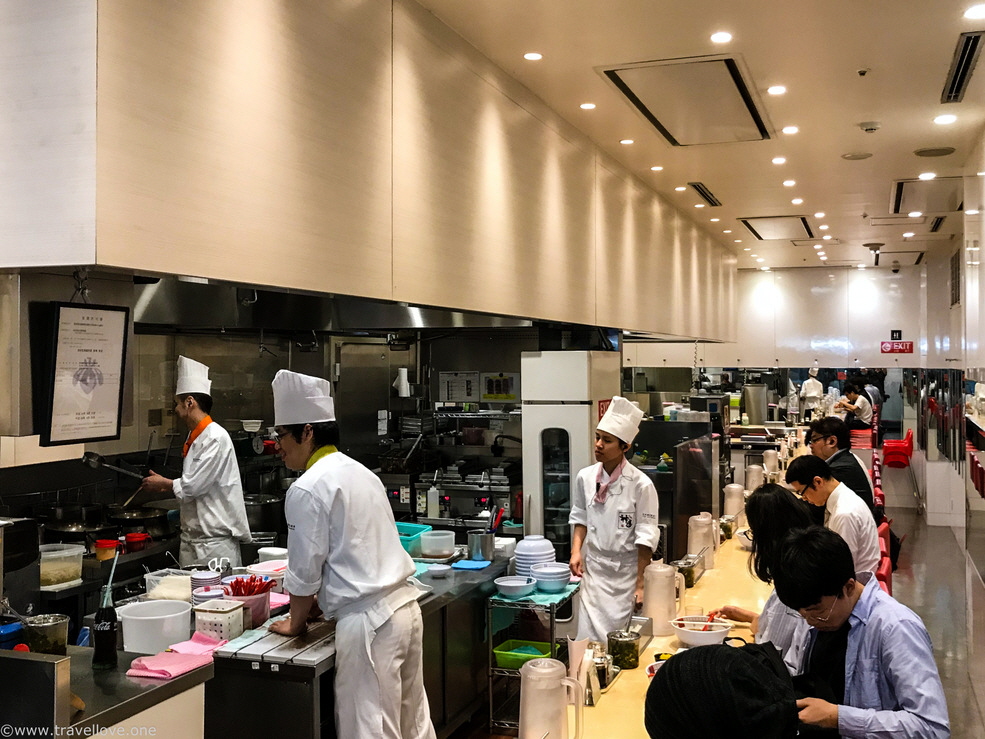
One of them took our tickets and disappeared behind the kitchen part in the center. A little later our drinks were served, and soon after our freshly prepared, steaming dishes which smelled just as tempting as they looked. All we can say is: Everything was absolutley delicious.
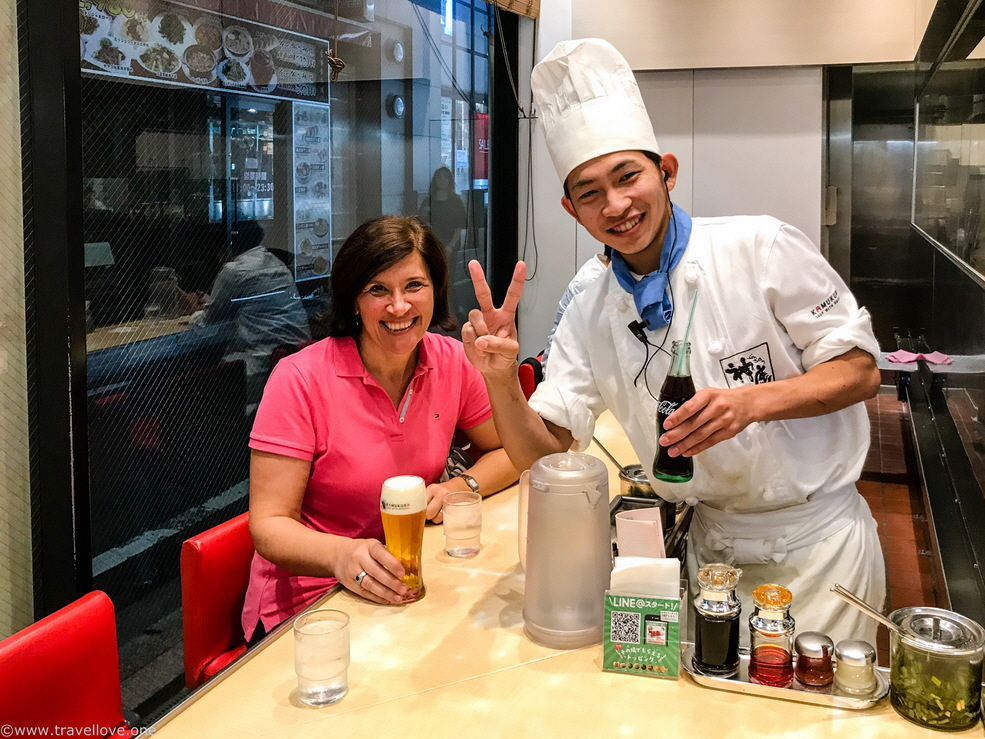
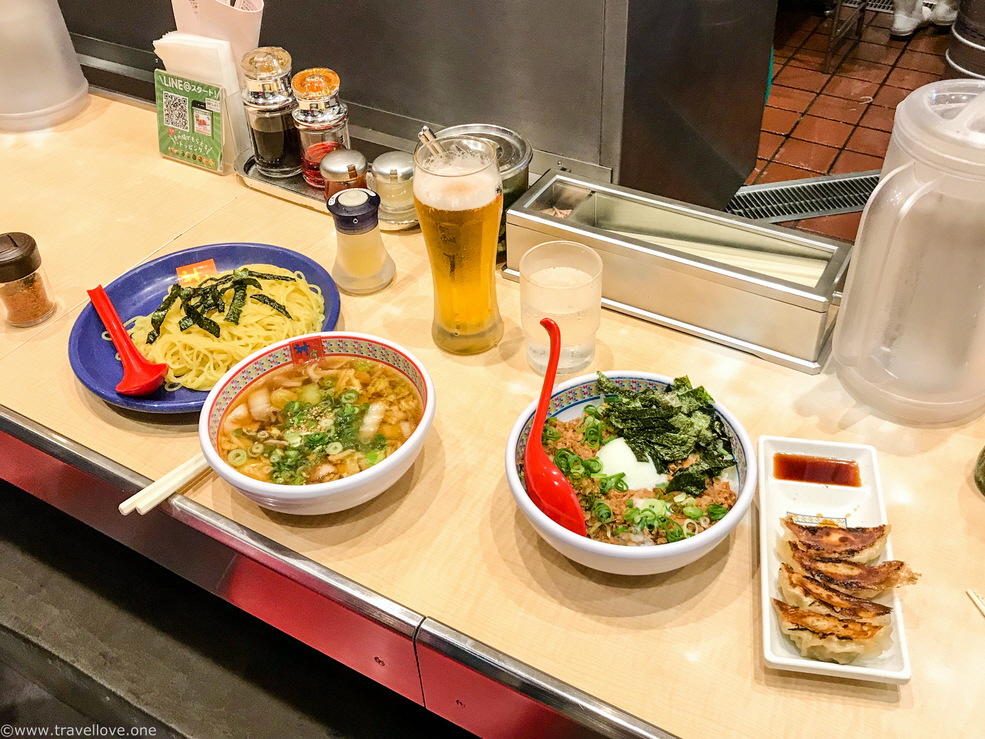
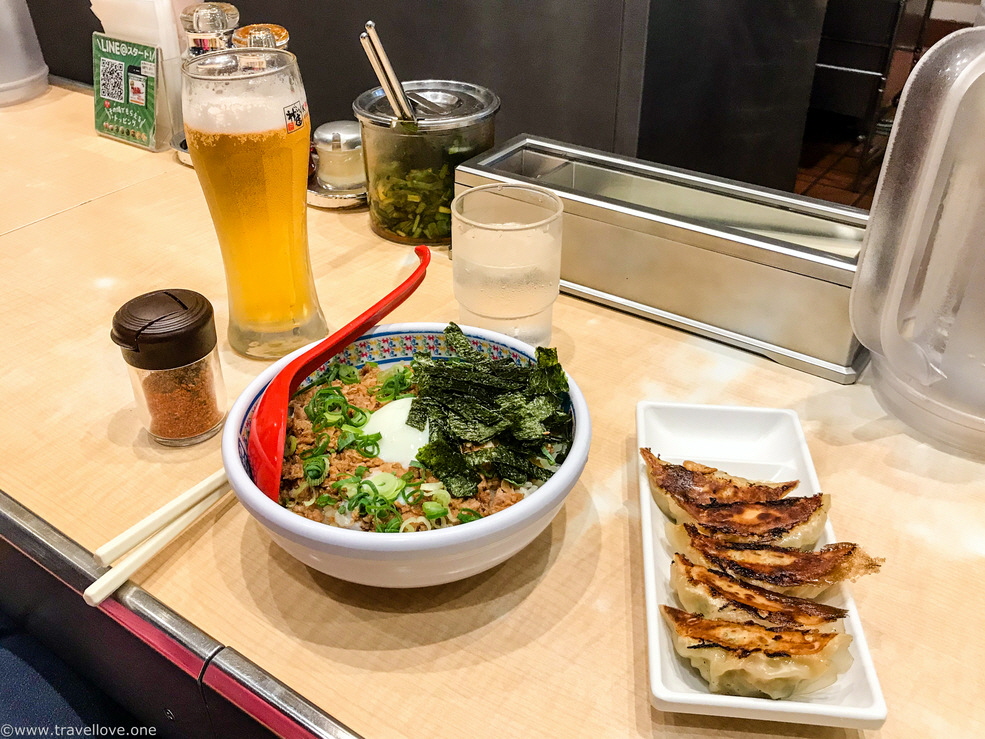
After our meal we decided to take a stroll through the busy streets which seemed endless with their colorful neon signs and crowds of people.
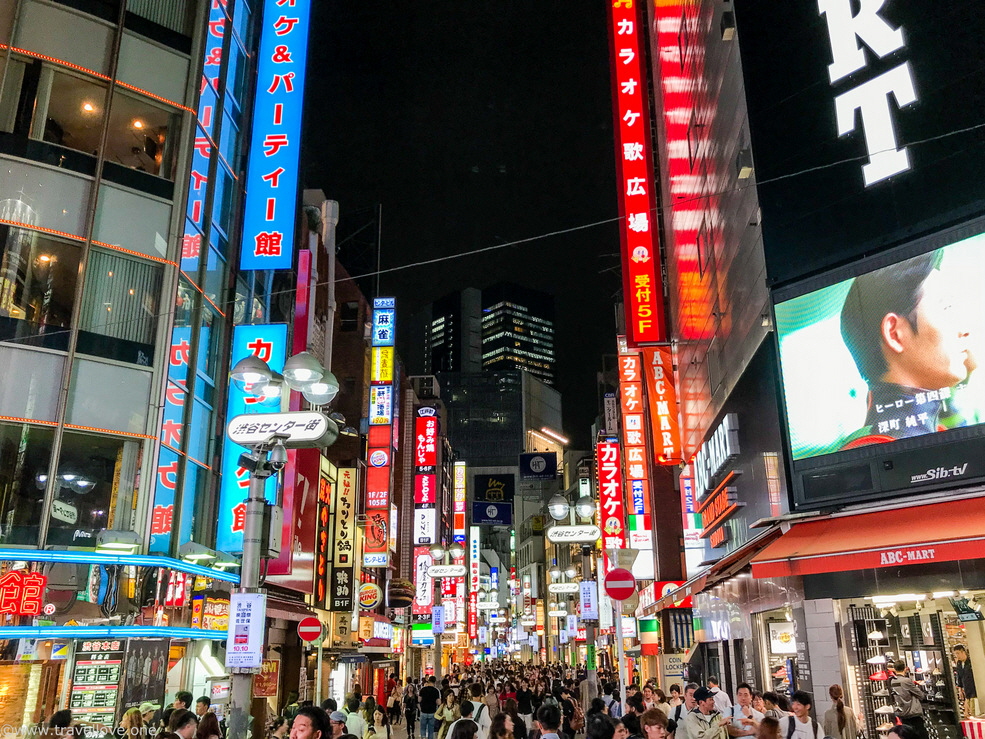
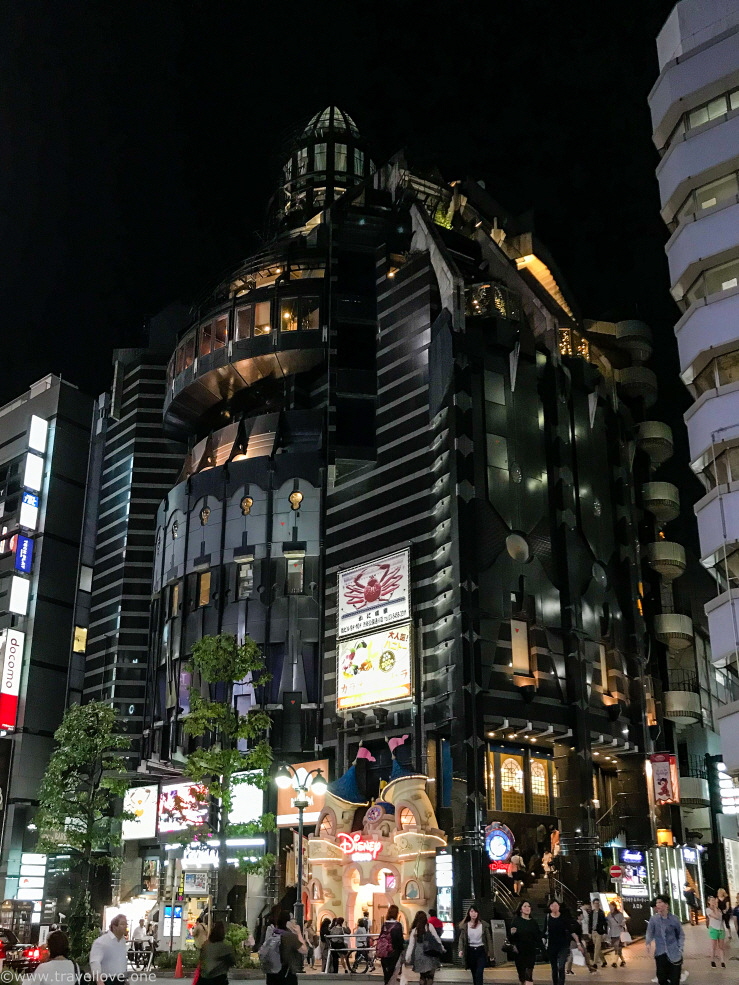
In one of the side streets we went to one of the department stores to have a look around. Only the next day did we learn from our tour guide that this department store was kind of popular among young Tokyoites.
Some of the goods seemed rather strange to us – headgear for cats, fur slippers of all kinds, colorful kitsch printed on all kinds of everything, cosmetics with cartoon characters ... it was a different world.
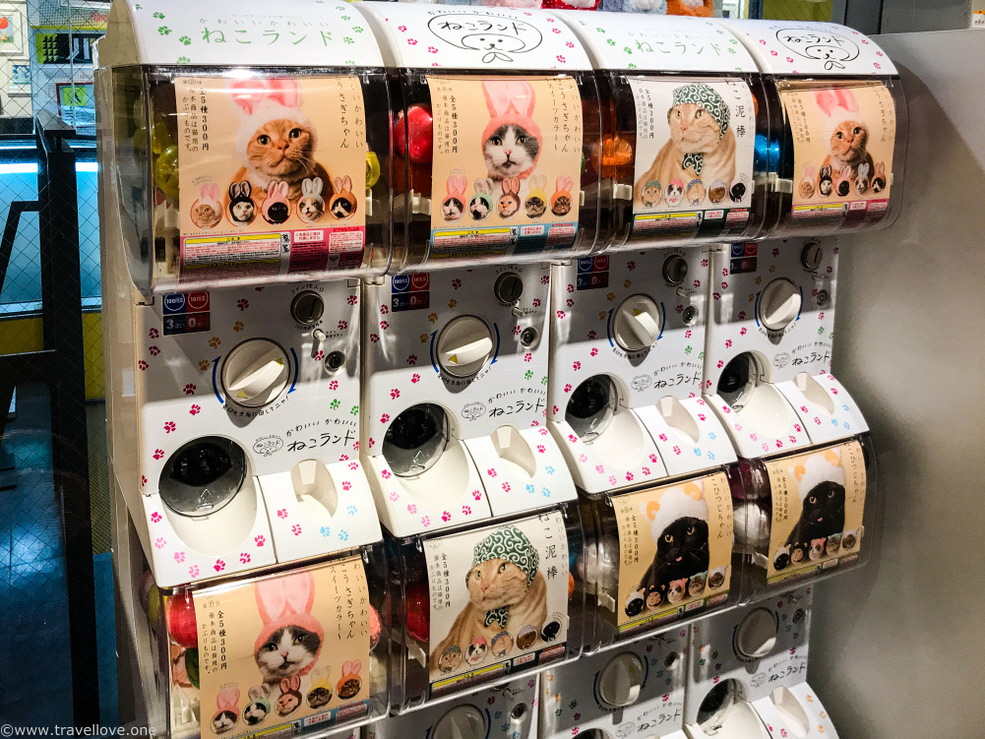
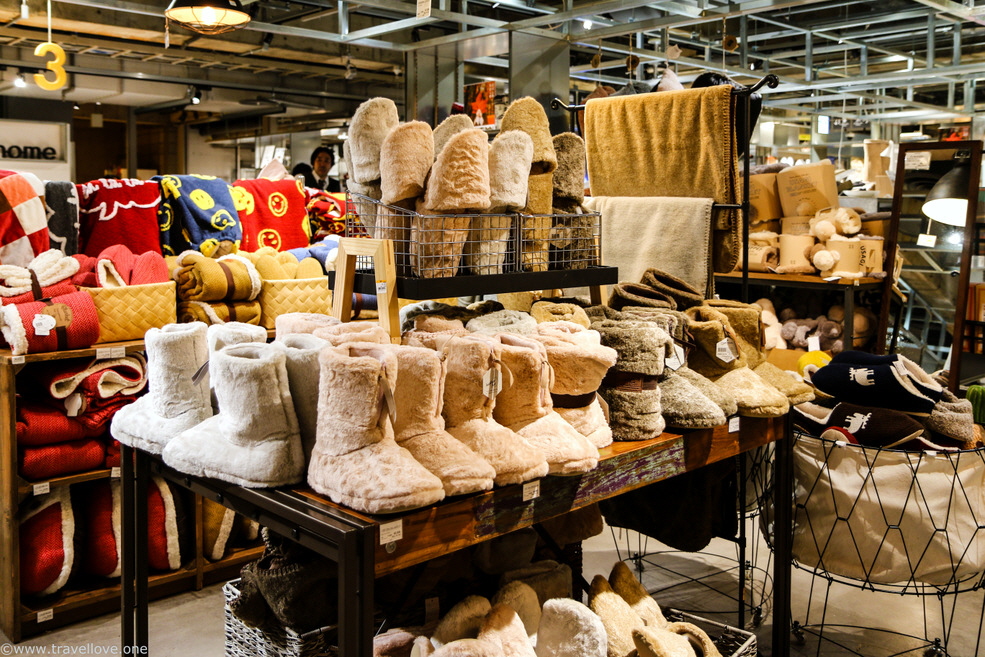
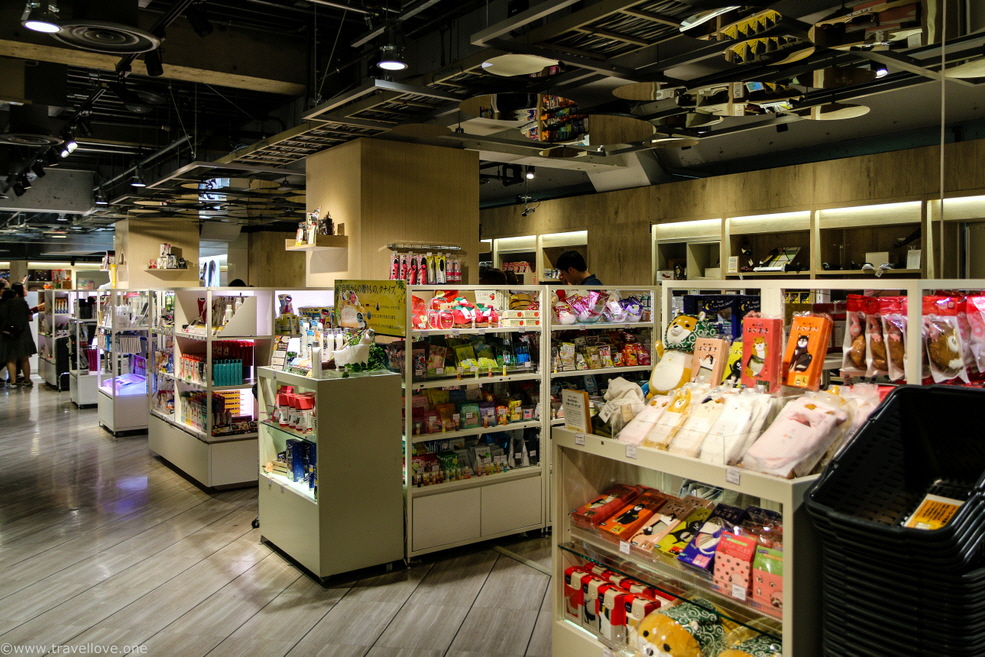
Slowly but surely we felt exhaustion kicking in. We could tell that despite our little nap we had been up for quite a long time. So we took the Yamanote Line back to our hotel and were grateful for our comfortable bed.
With the view of the illuminated highrises, high above the incoming and outgoing, futuristic-looking Shinkansen Bullet Trains, we fell asleep with our heads full of all that we had seen and experienced on this first day.
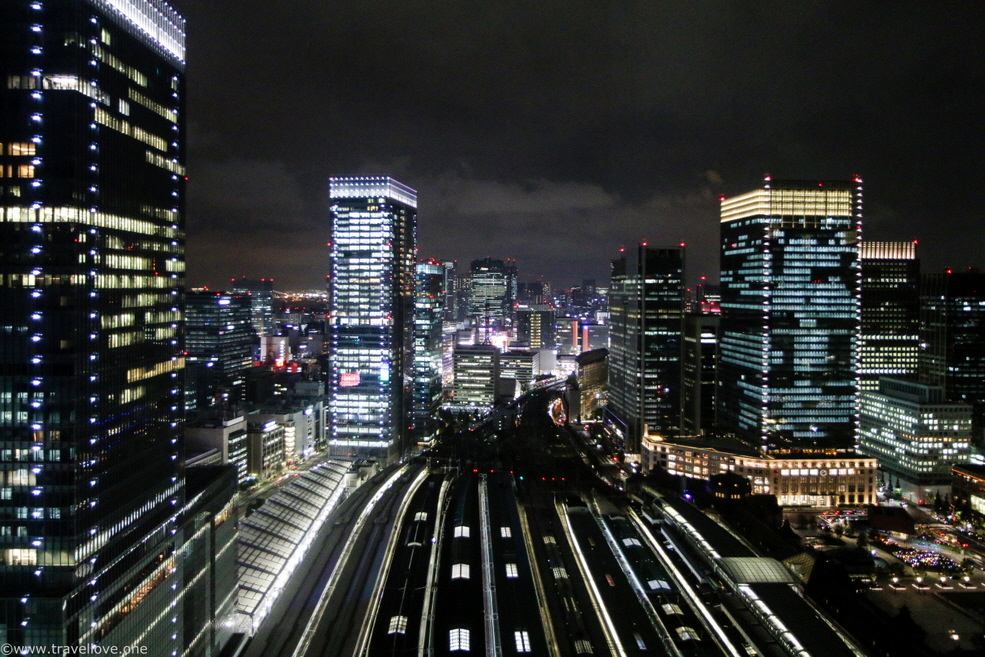
www.travellove.one • www.thecruise.report • www.travelandcruise.net
© 2021 Die Rechte an Texten, Fotos und Videos liegen beim Autor der Webseite. Die Nutzung ist nur nach ausdrücklicher Freigabe erlaubt.
